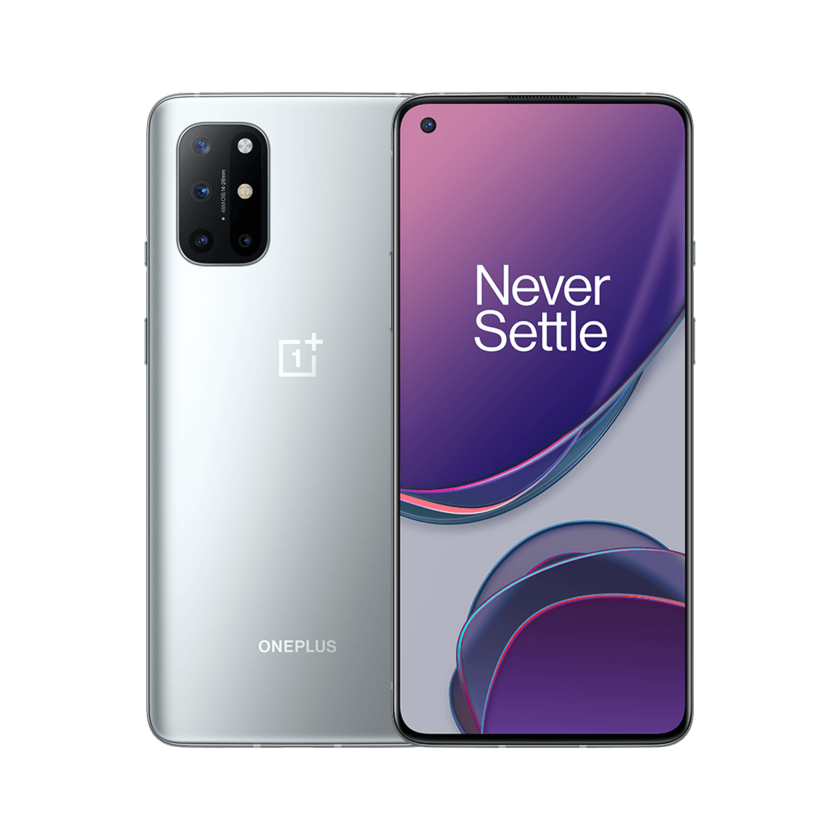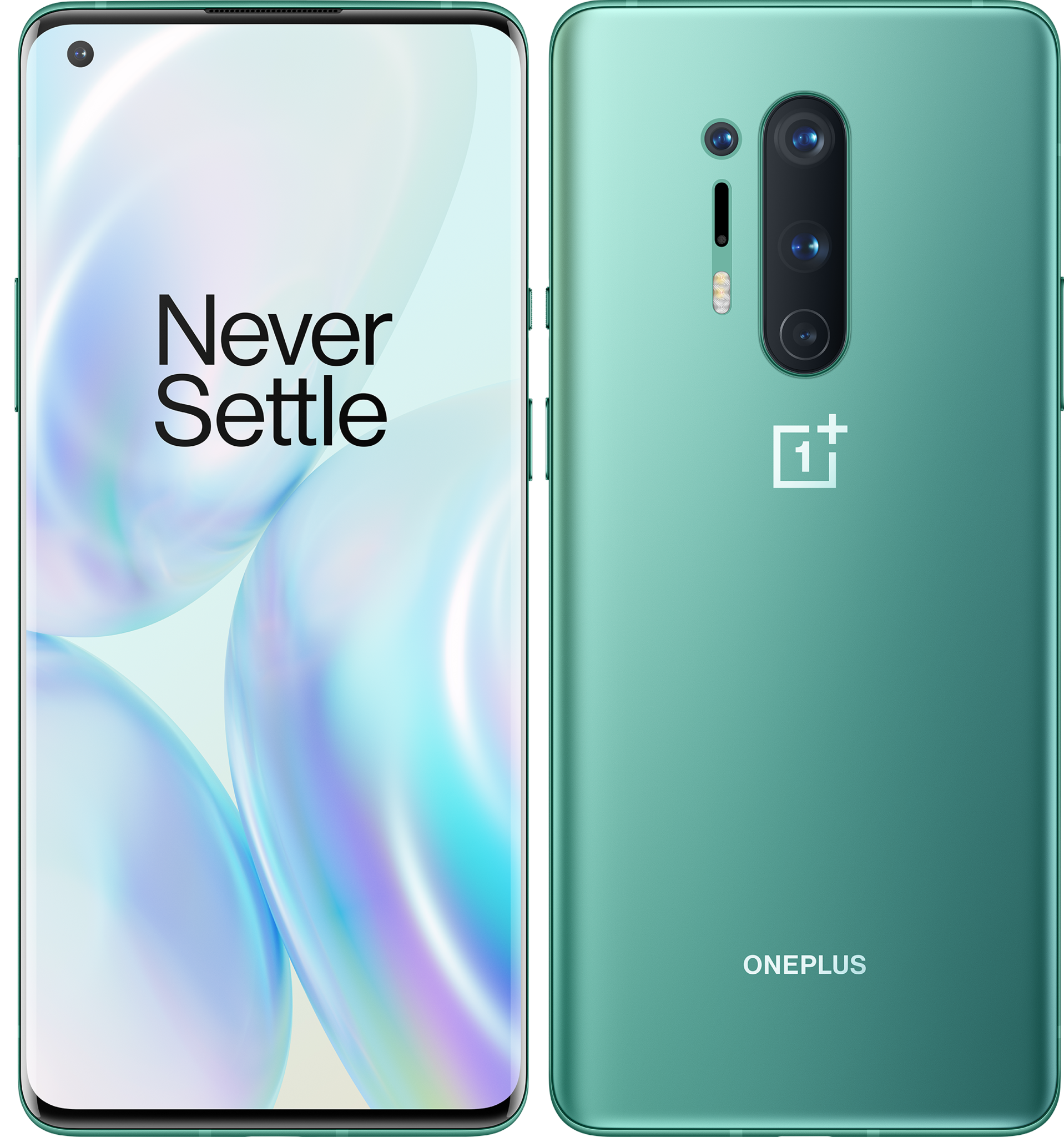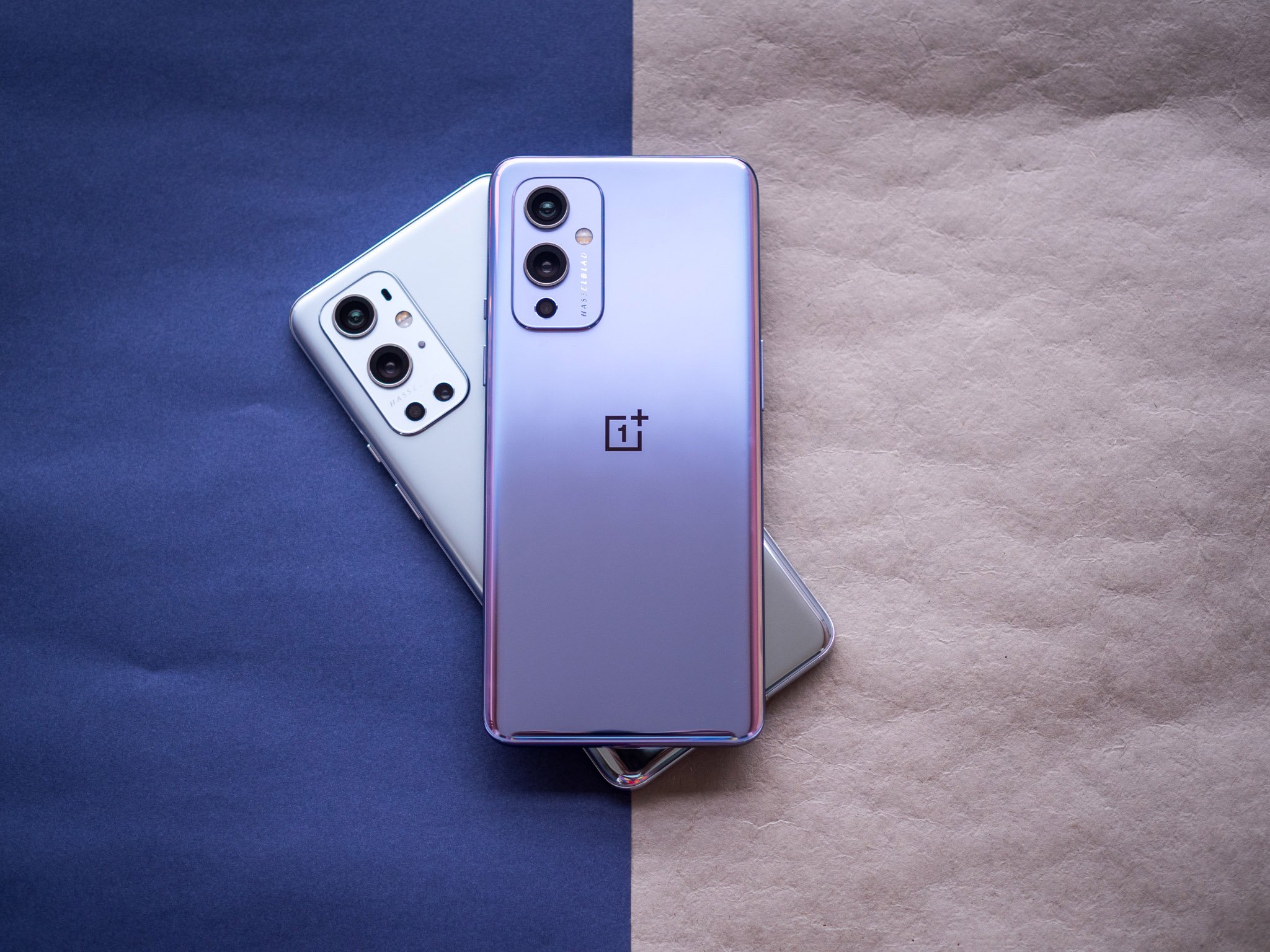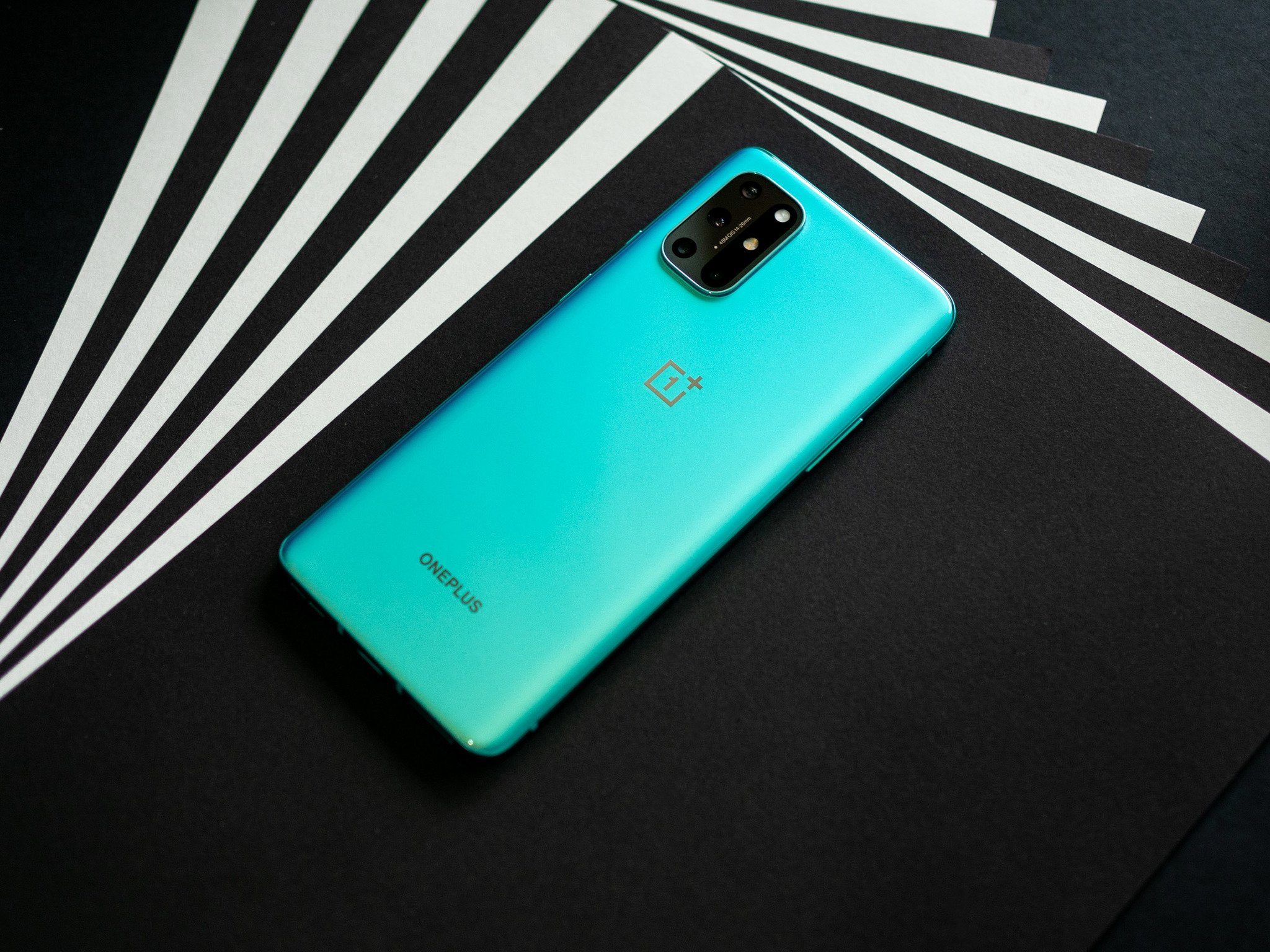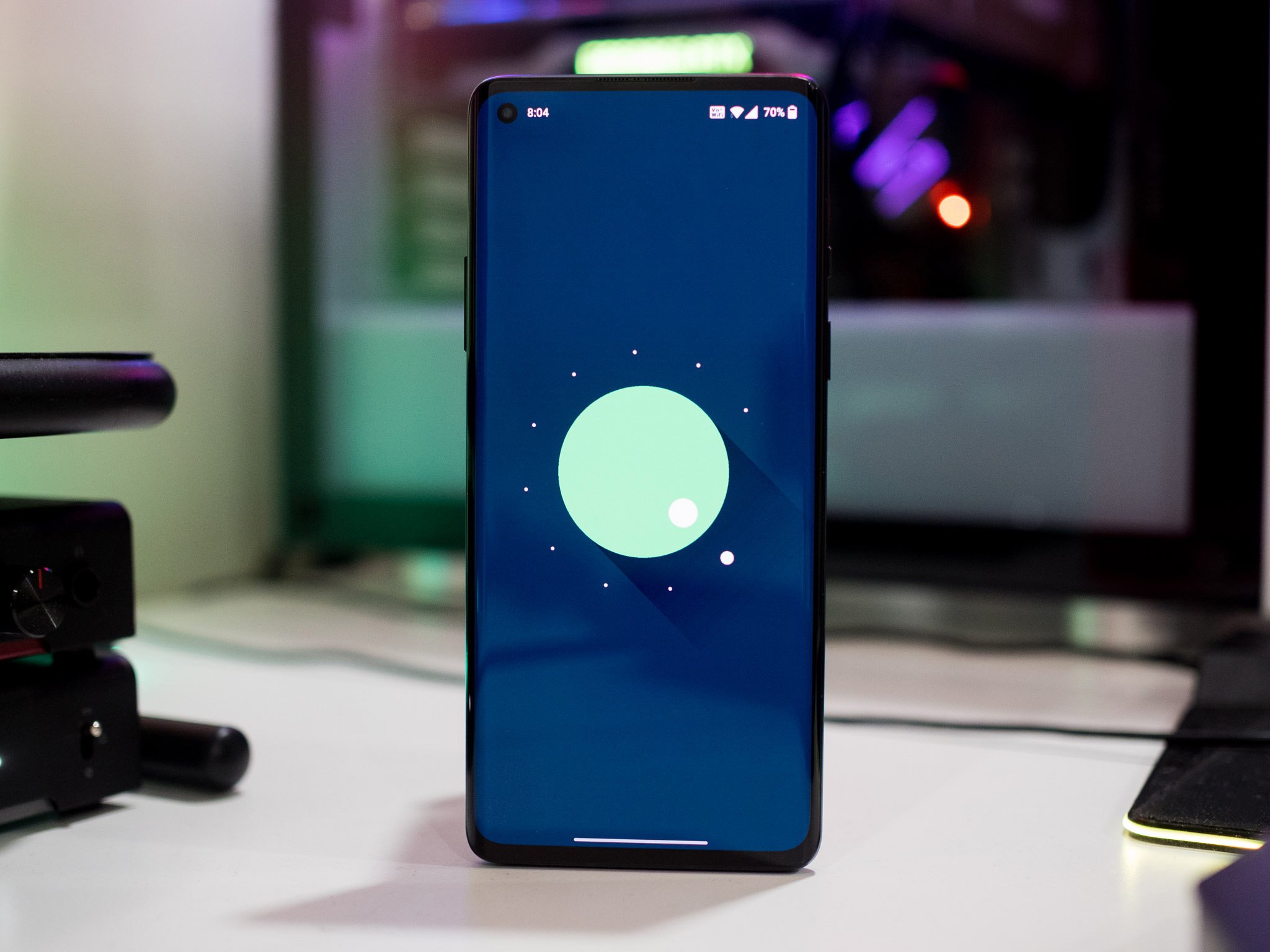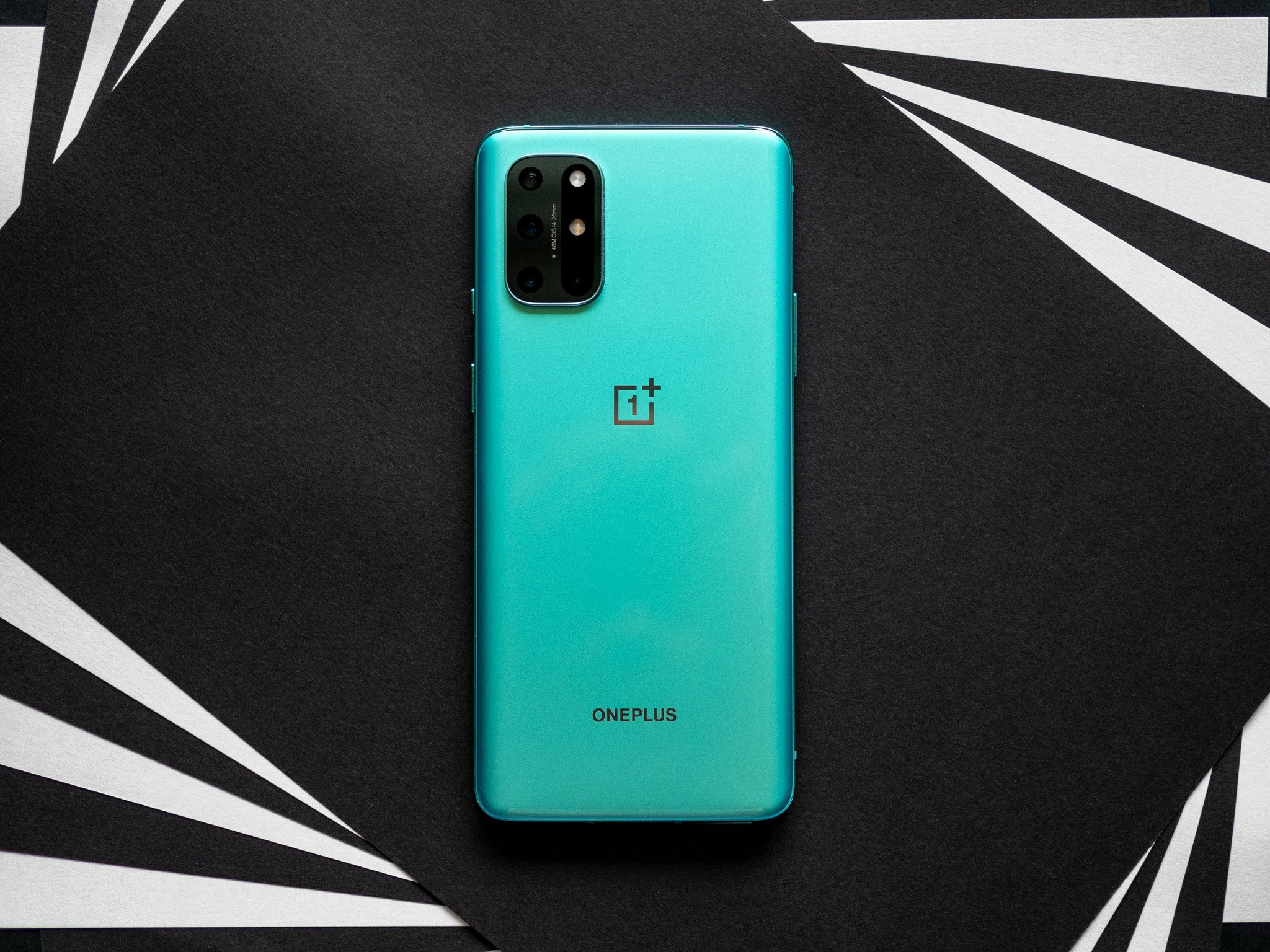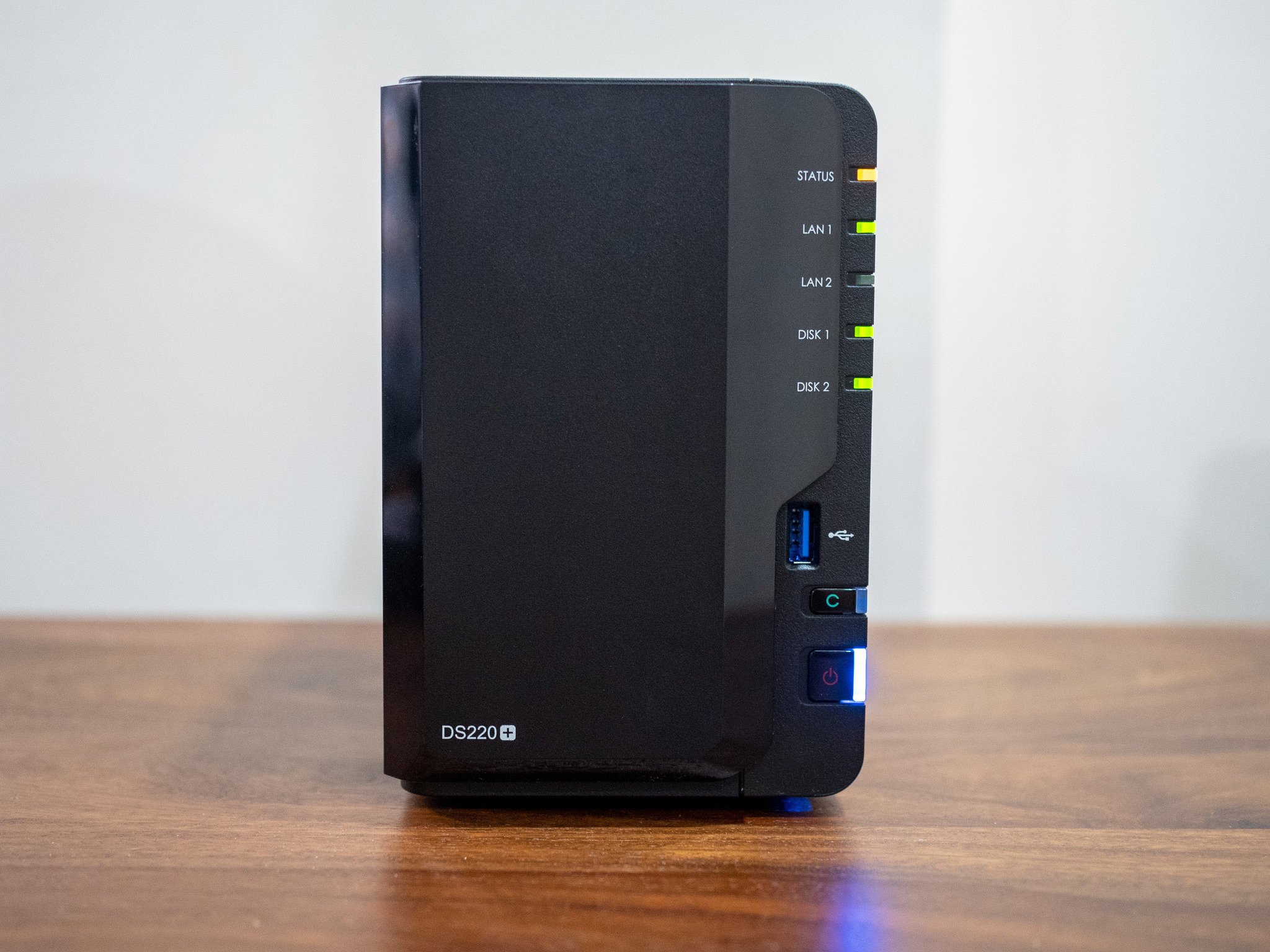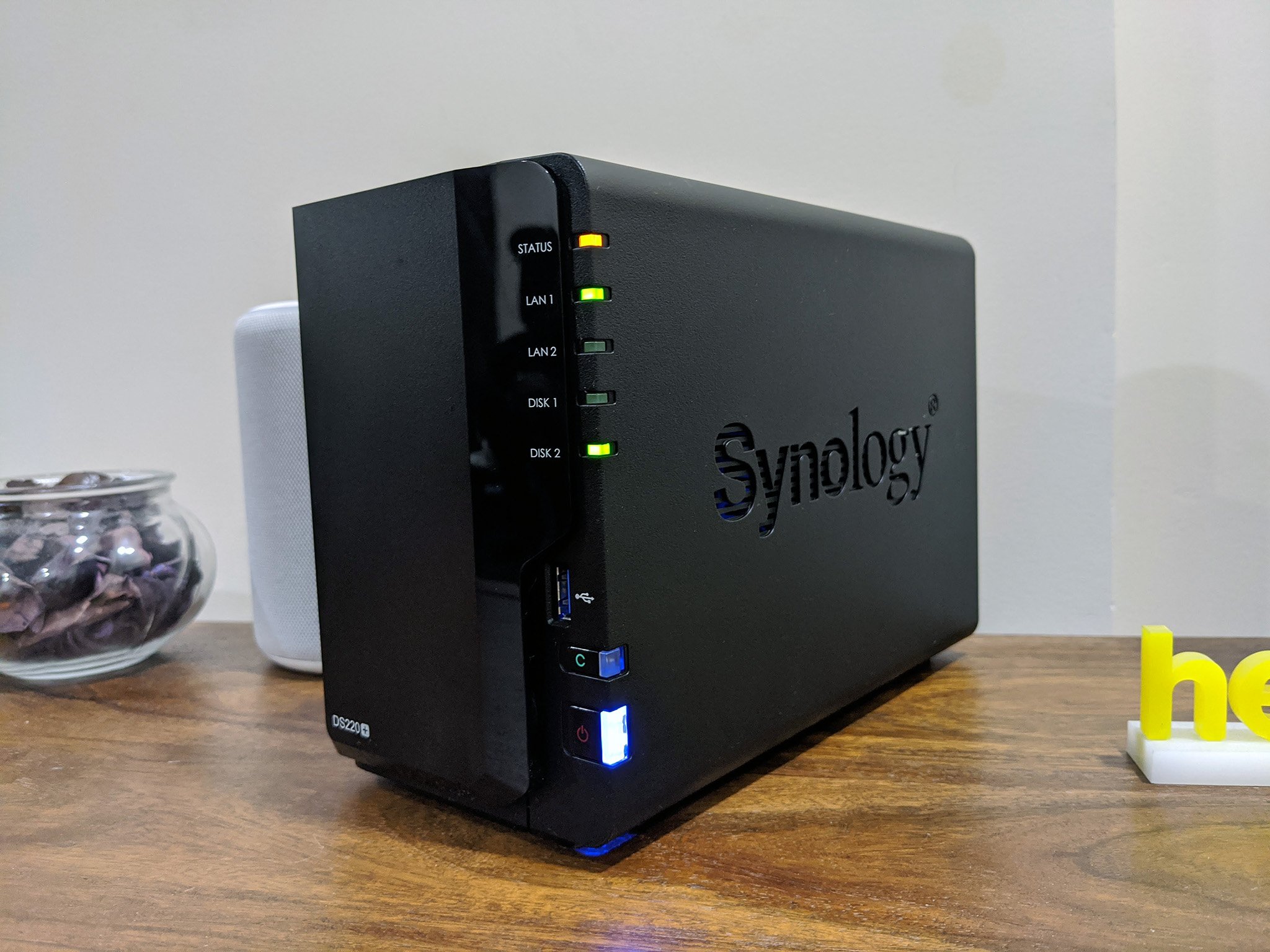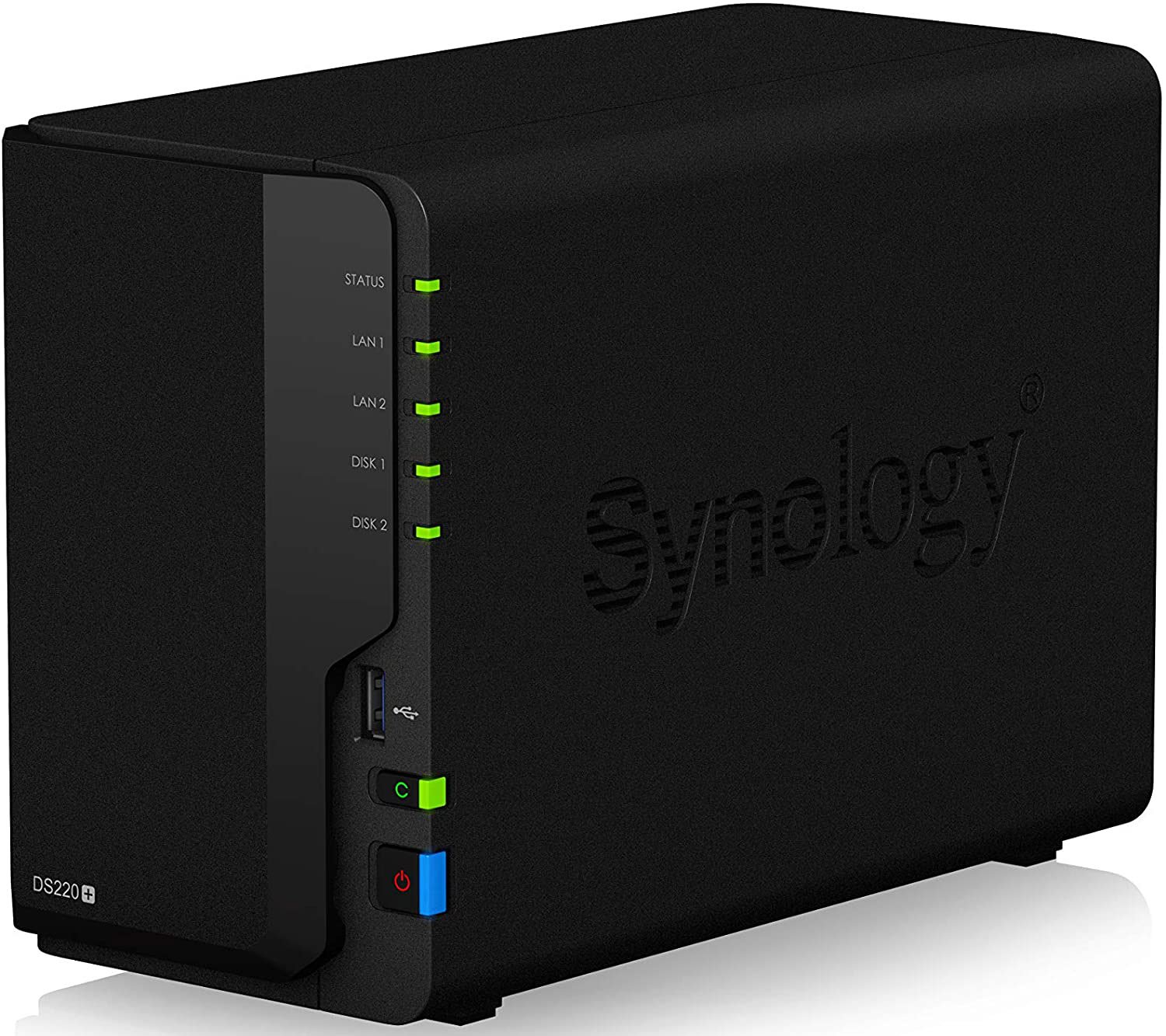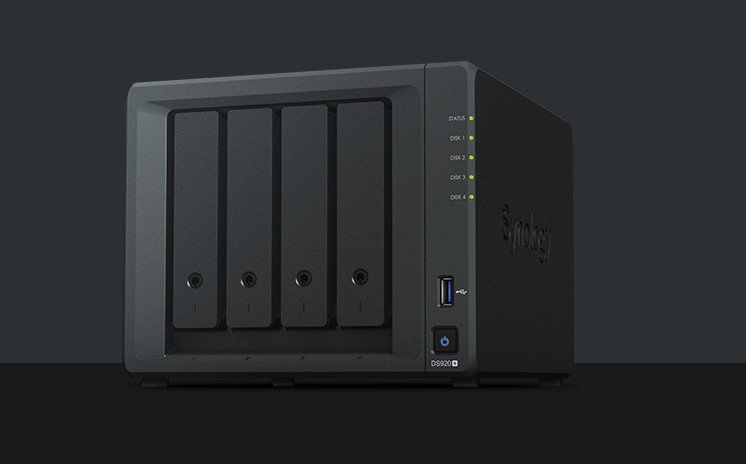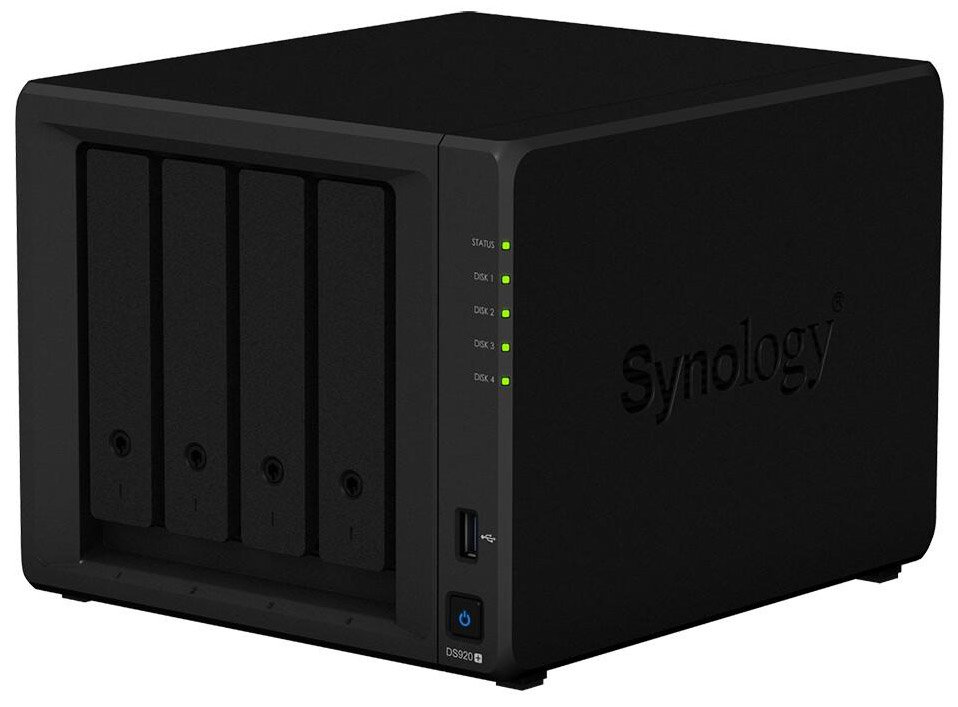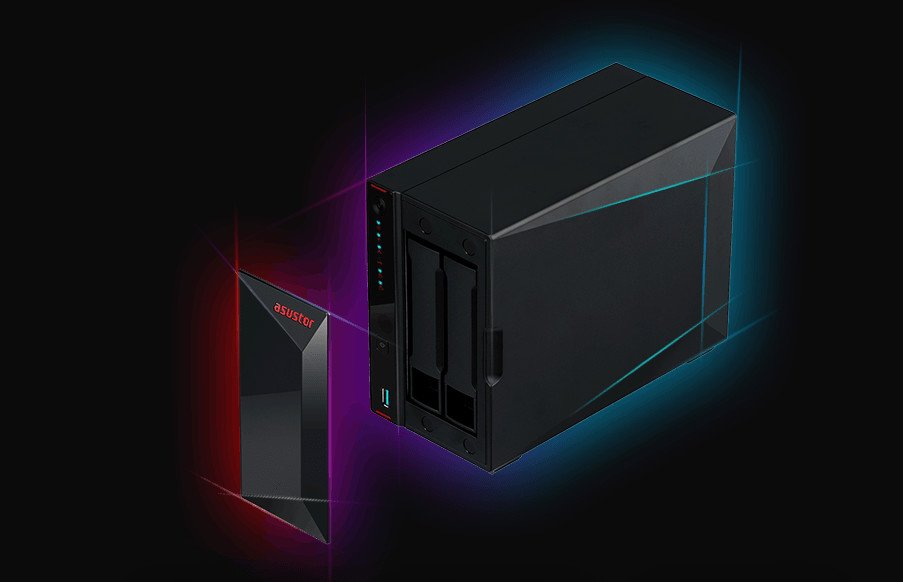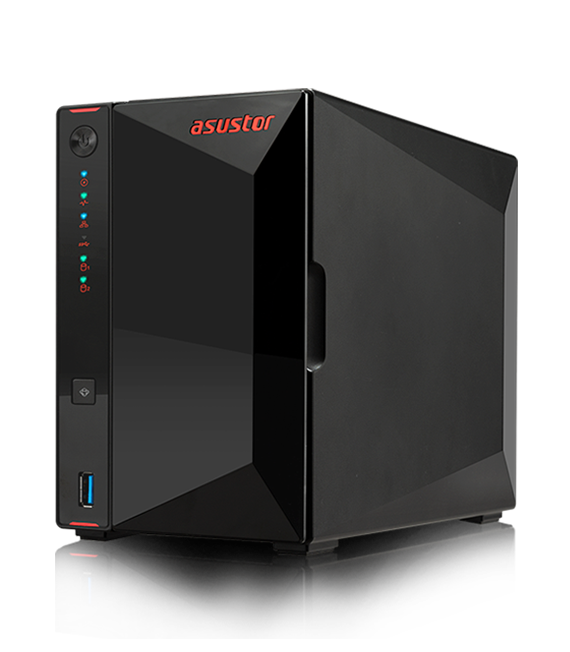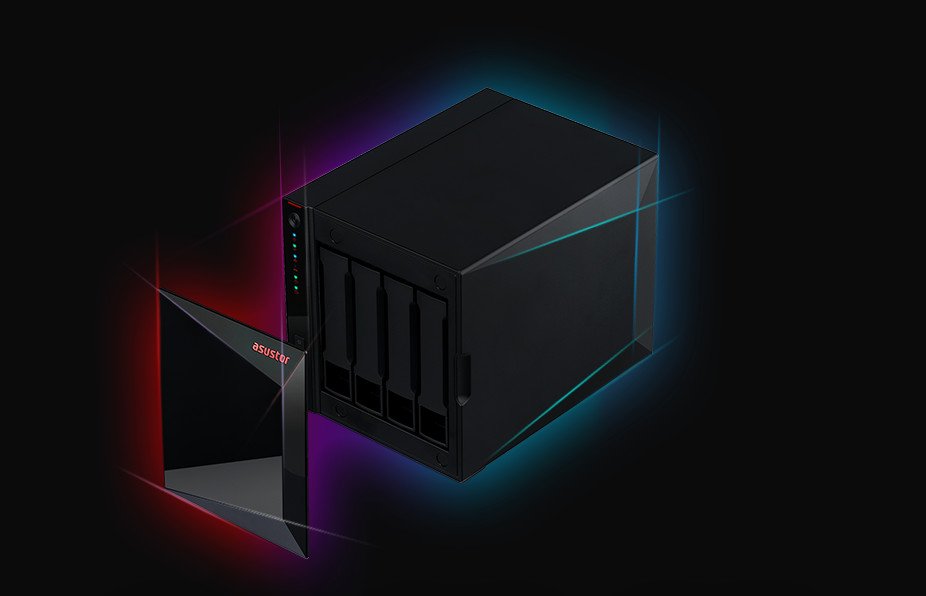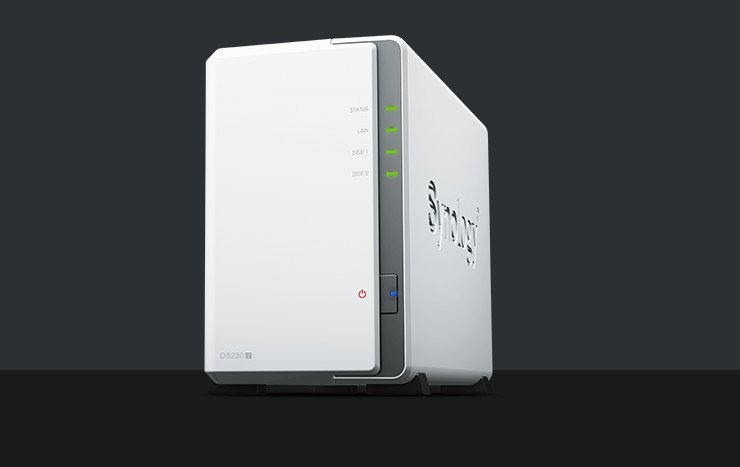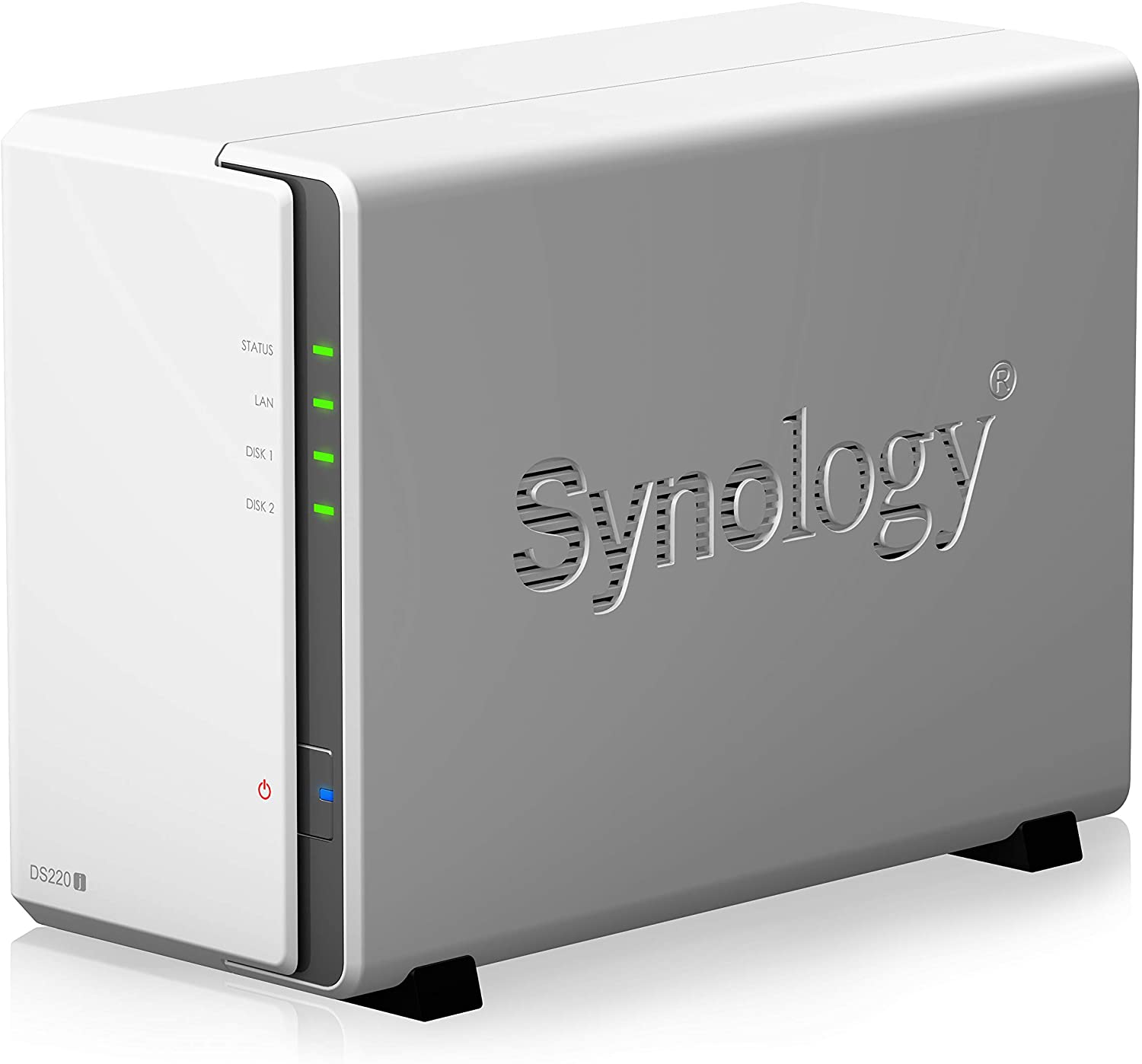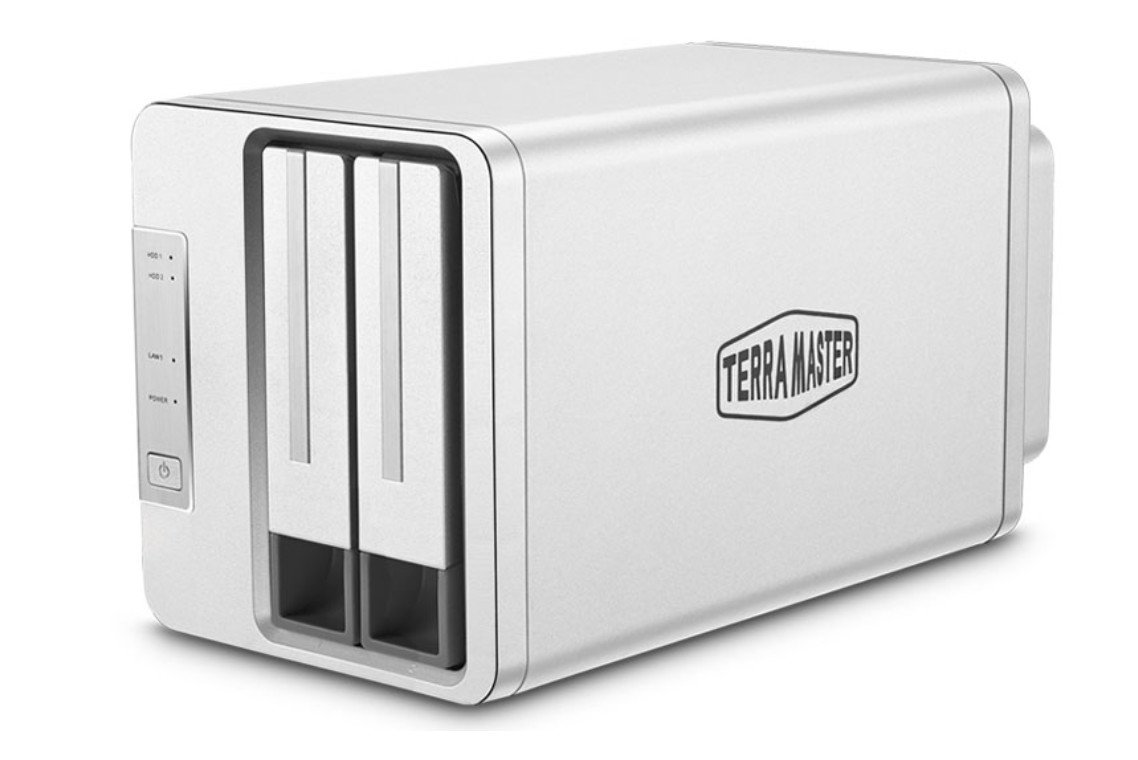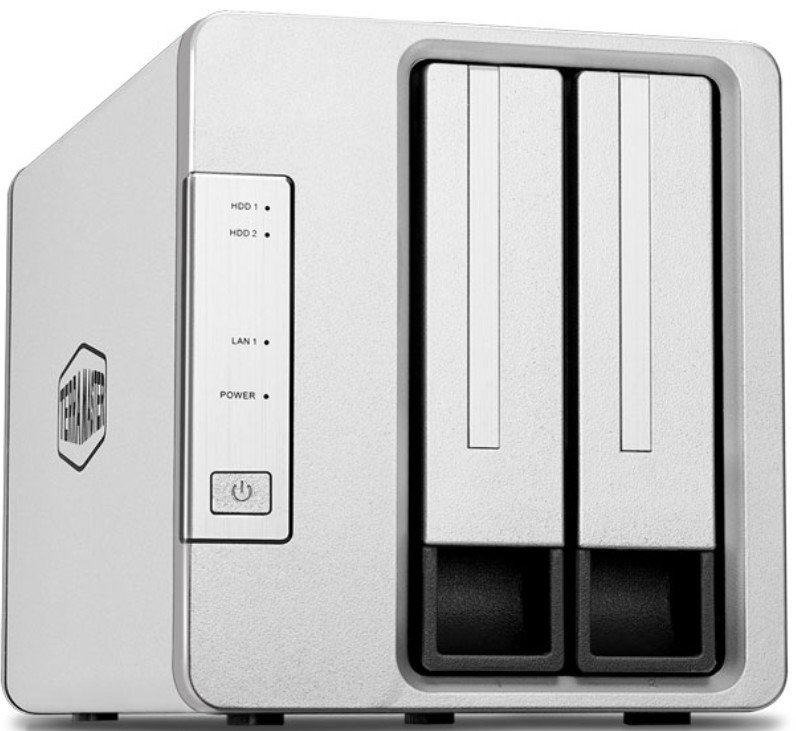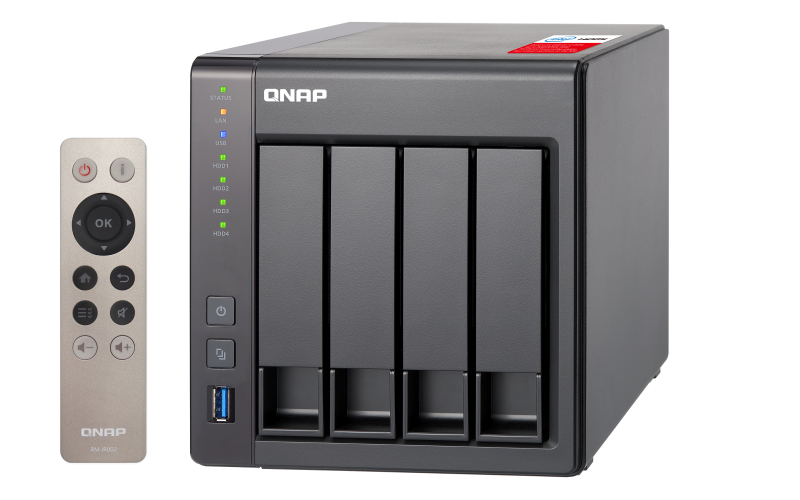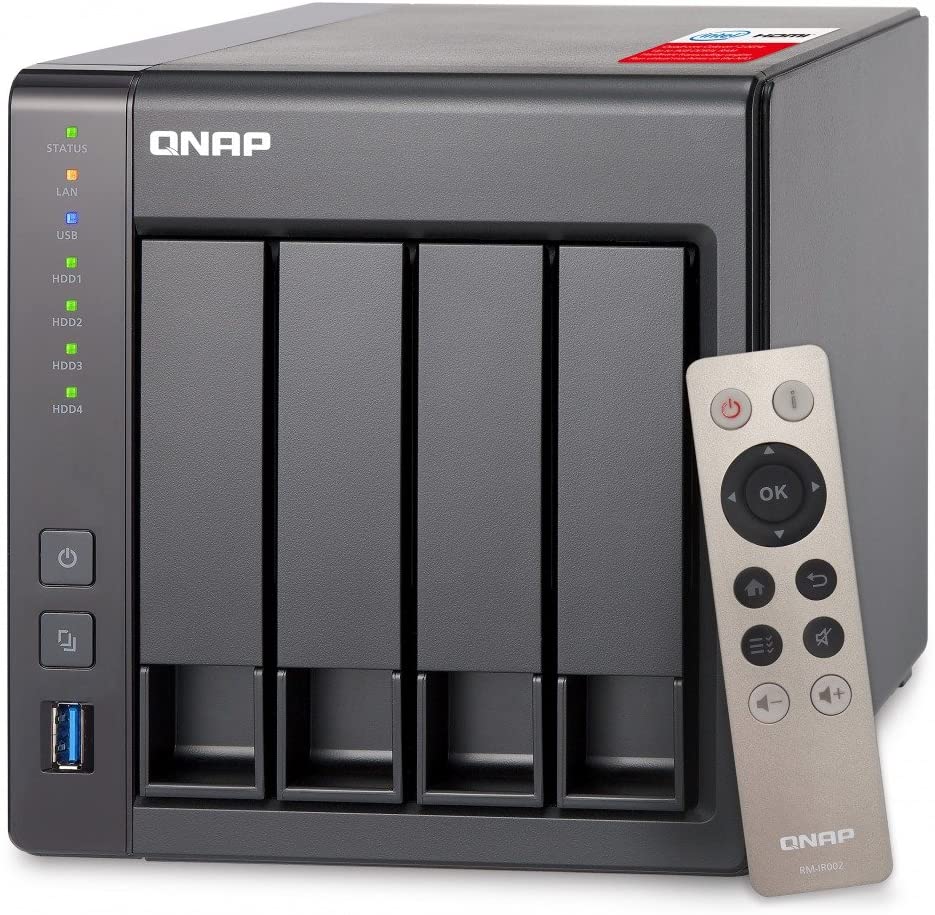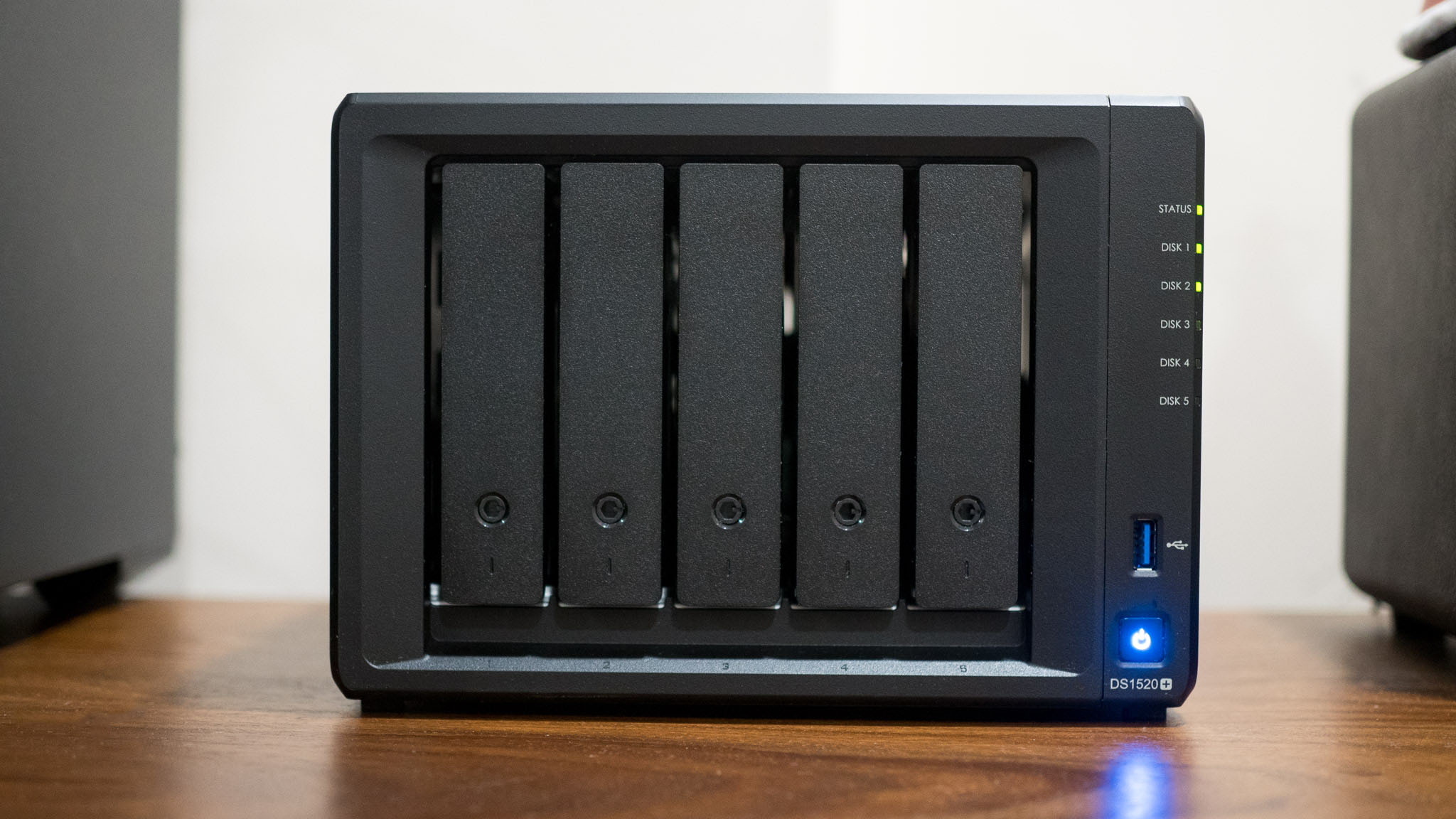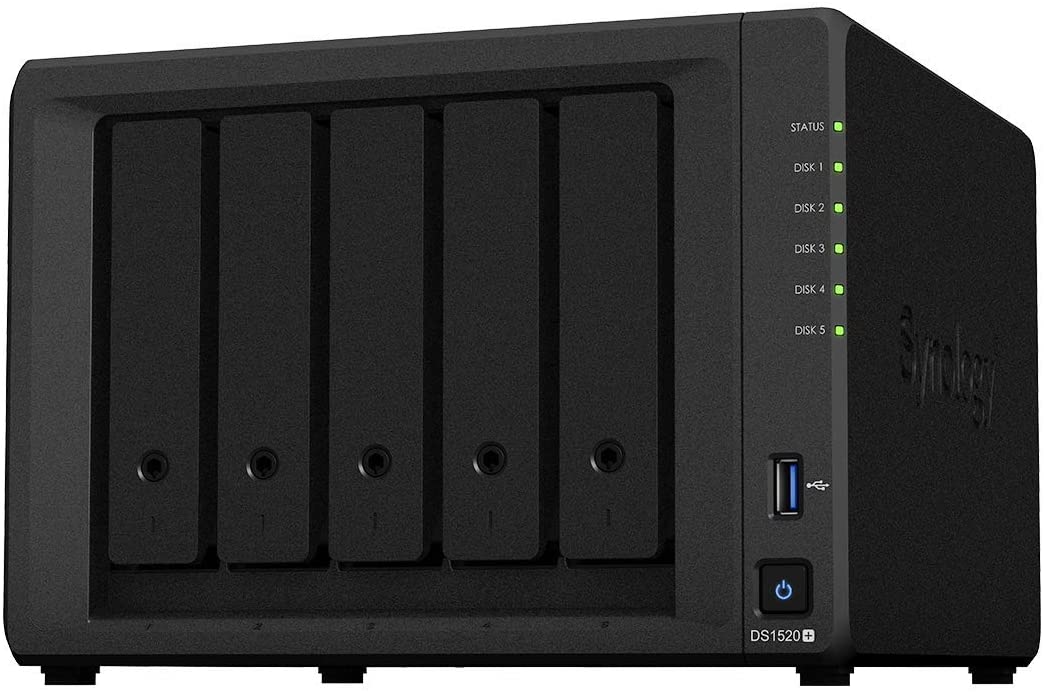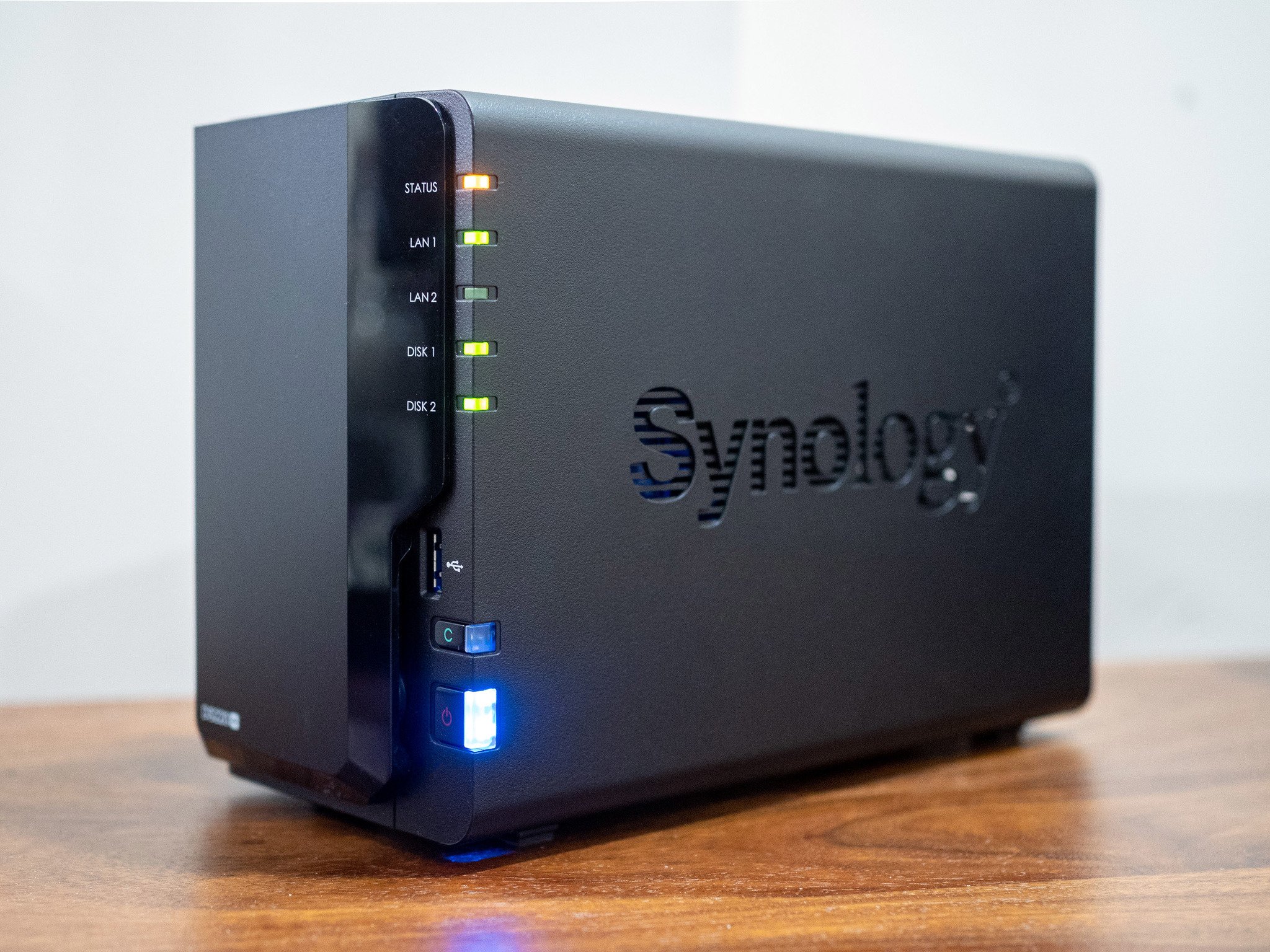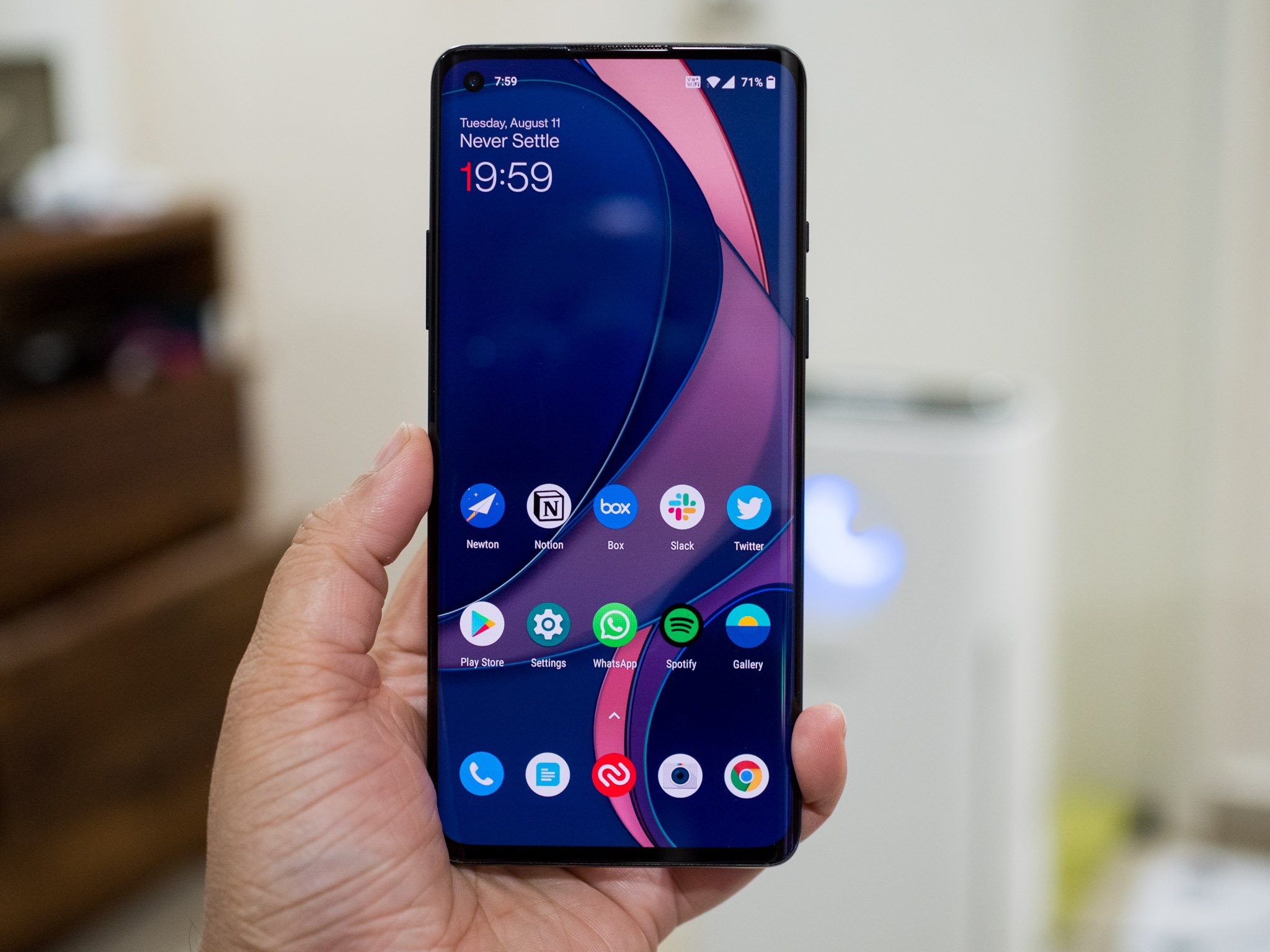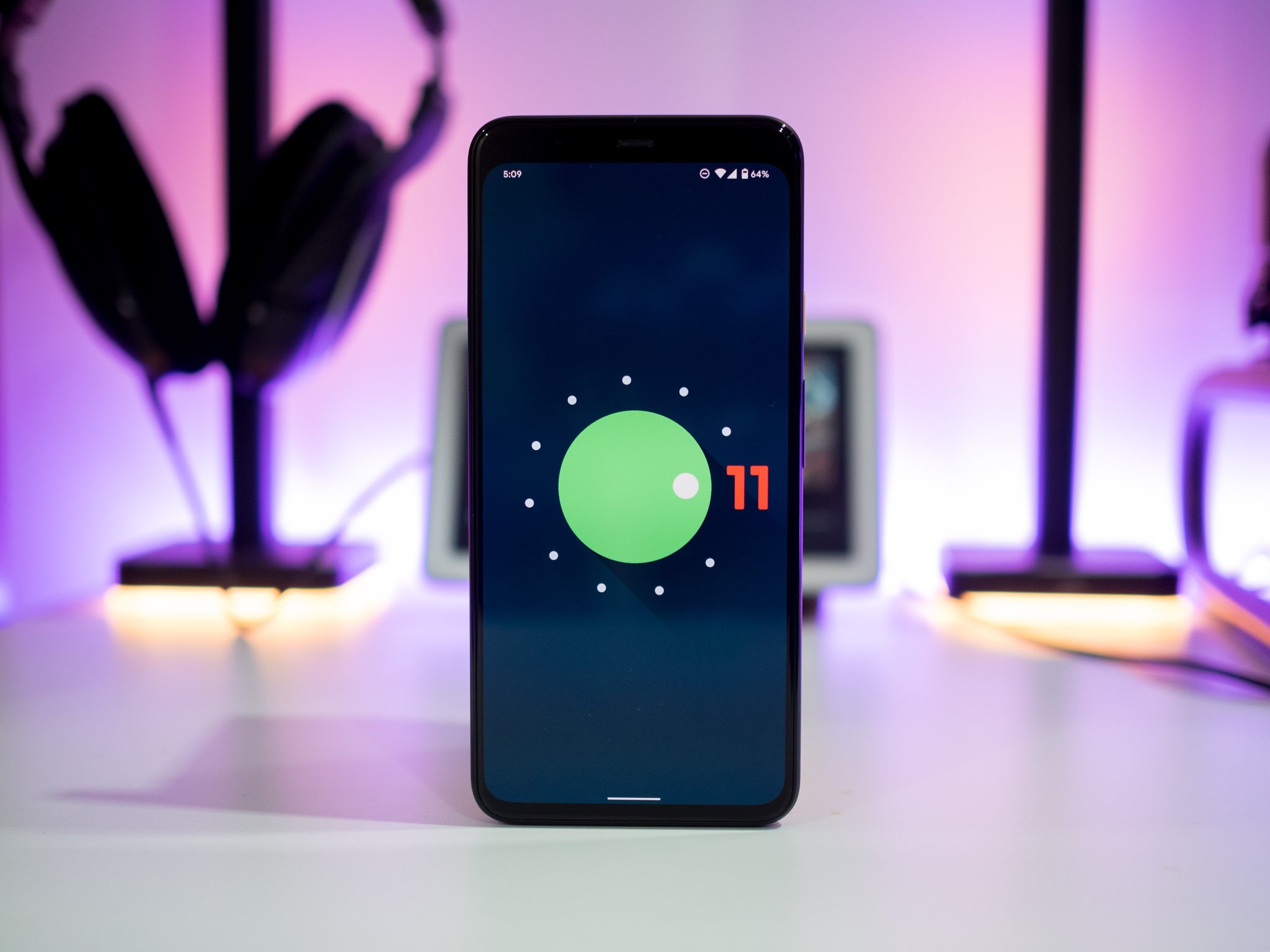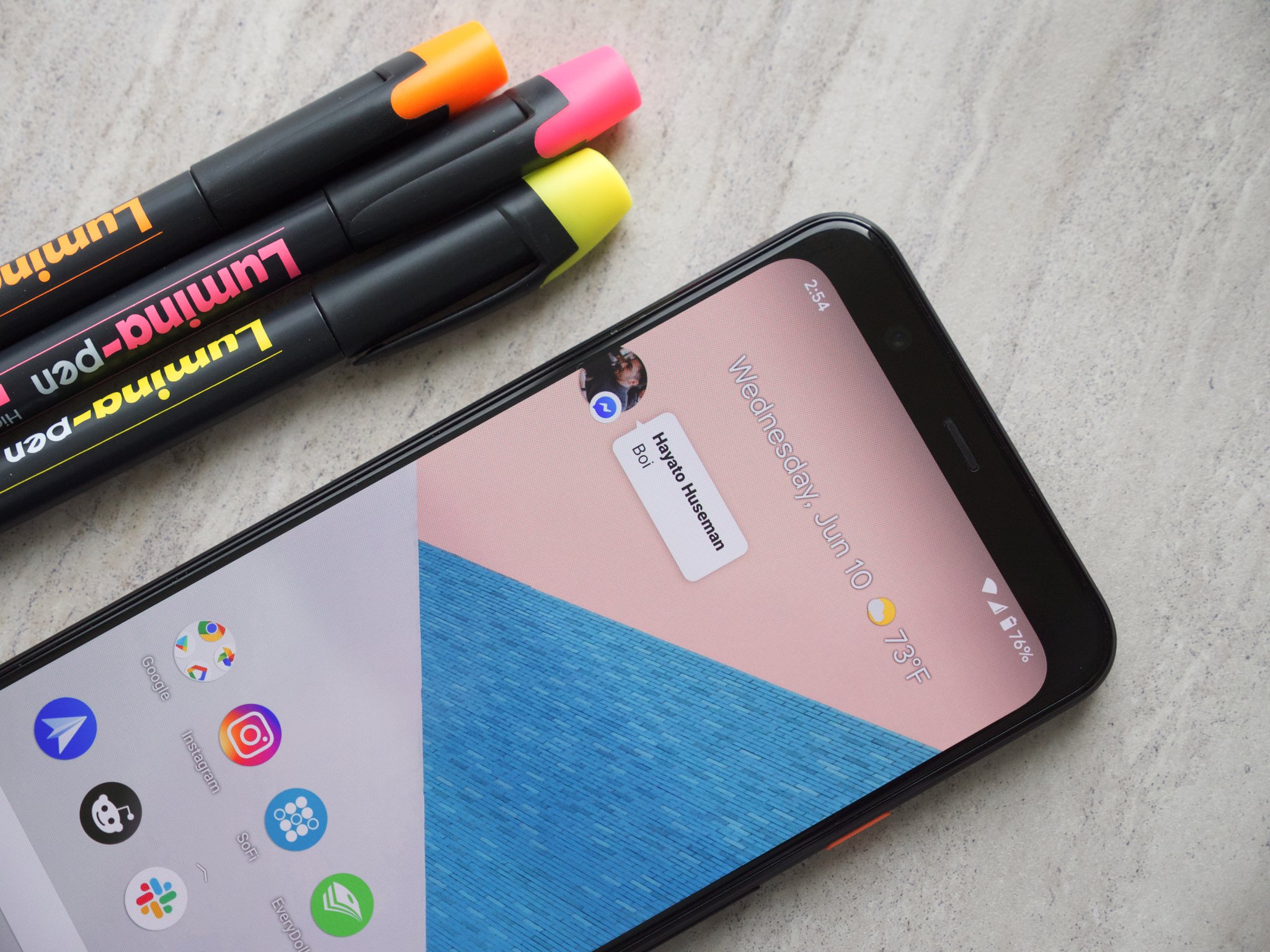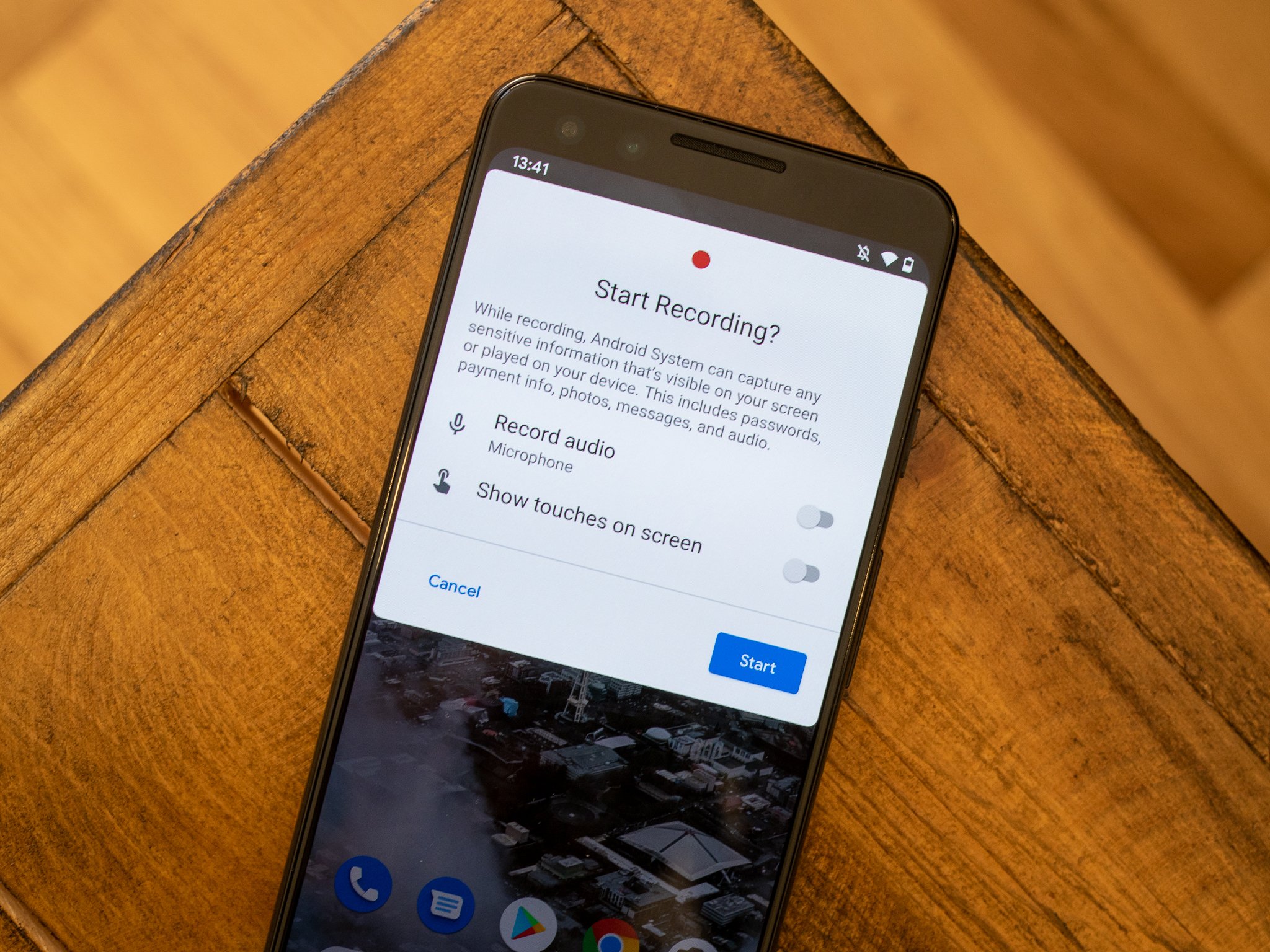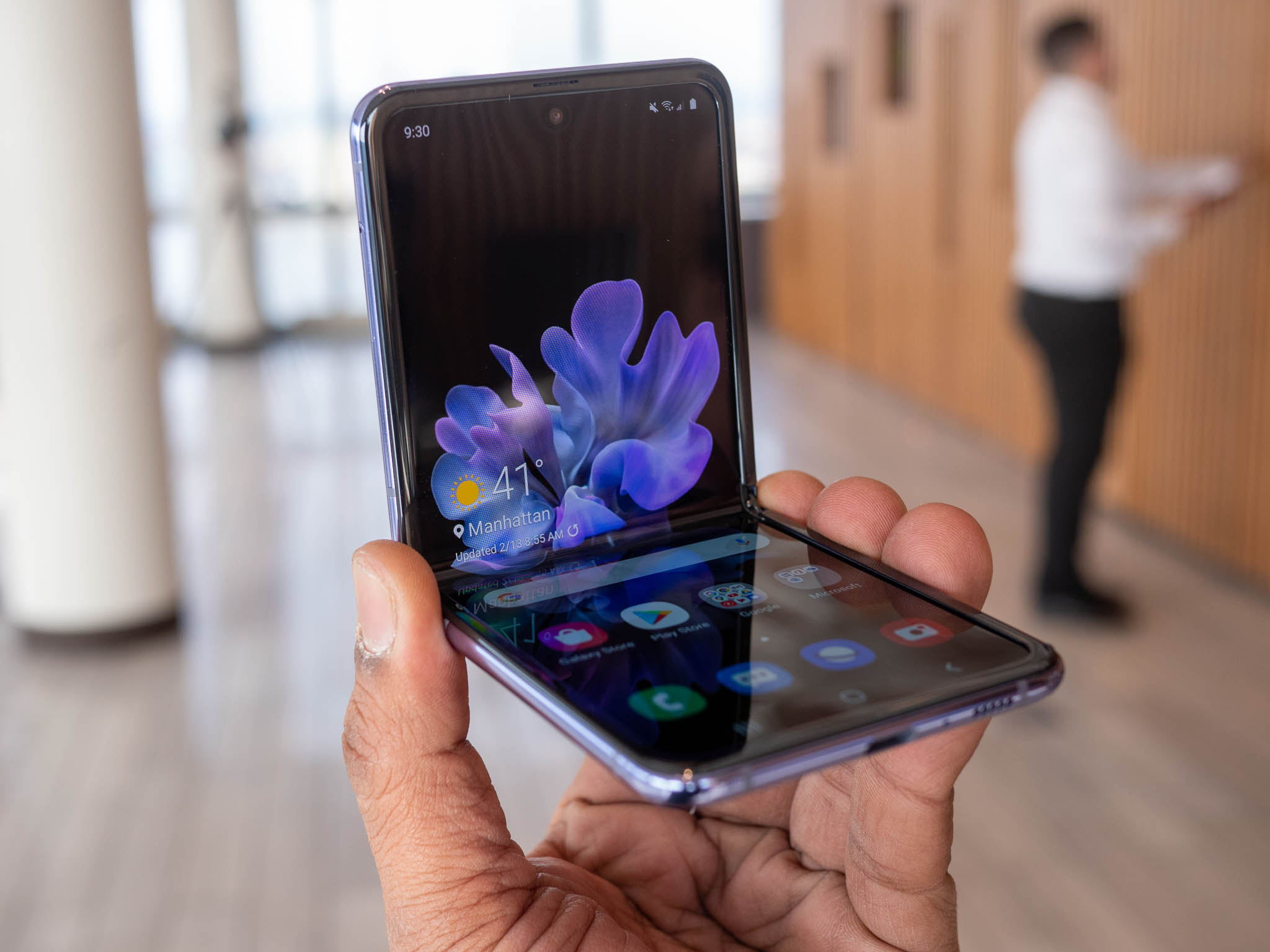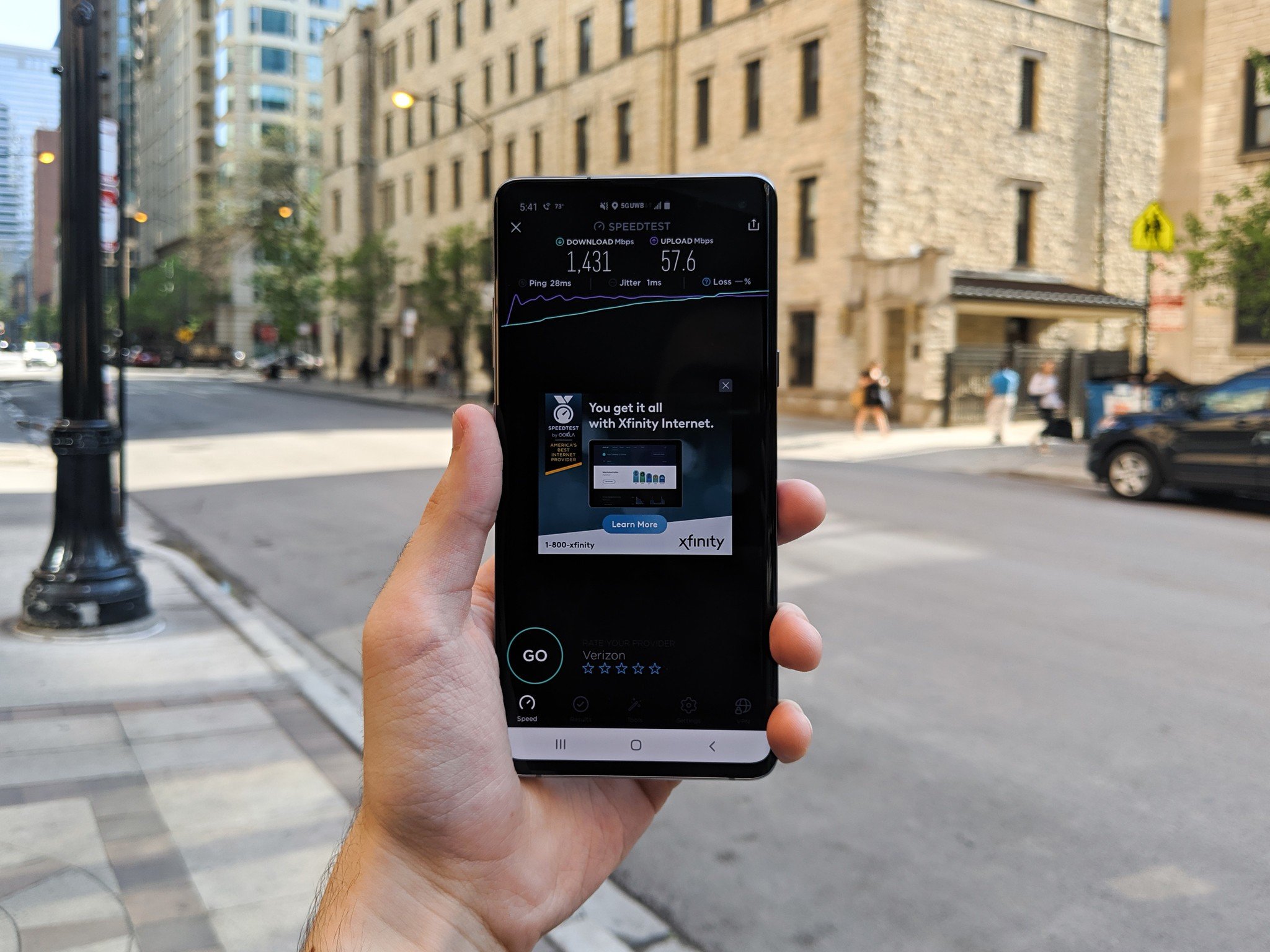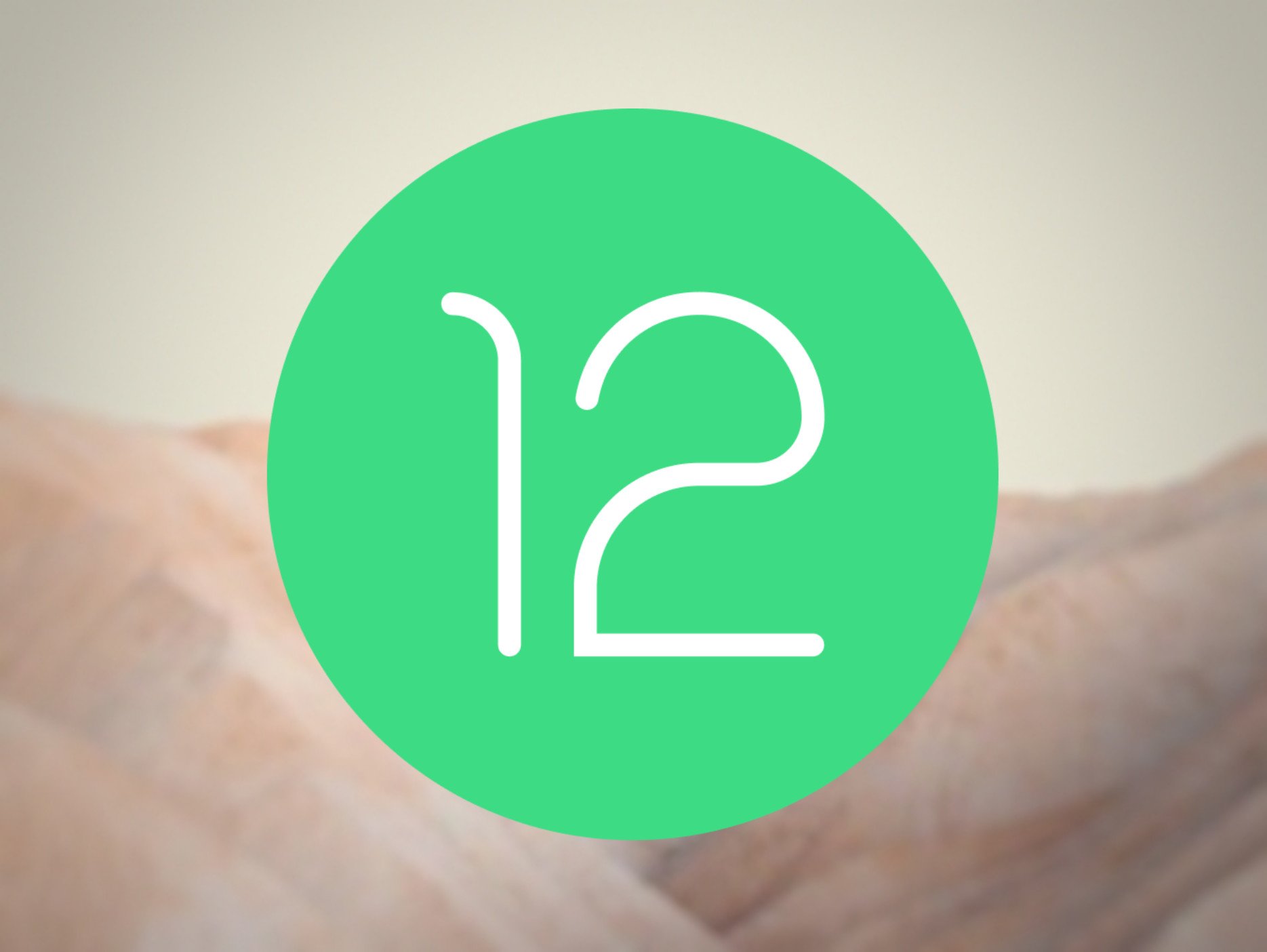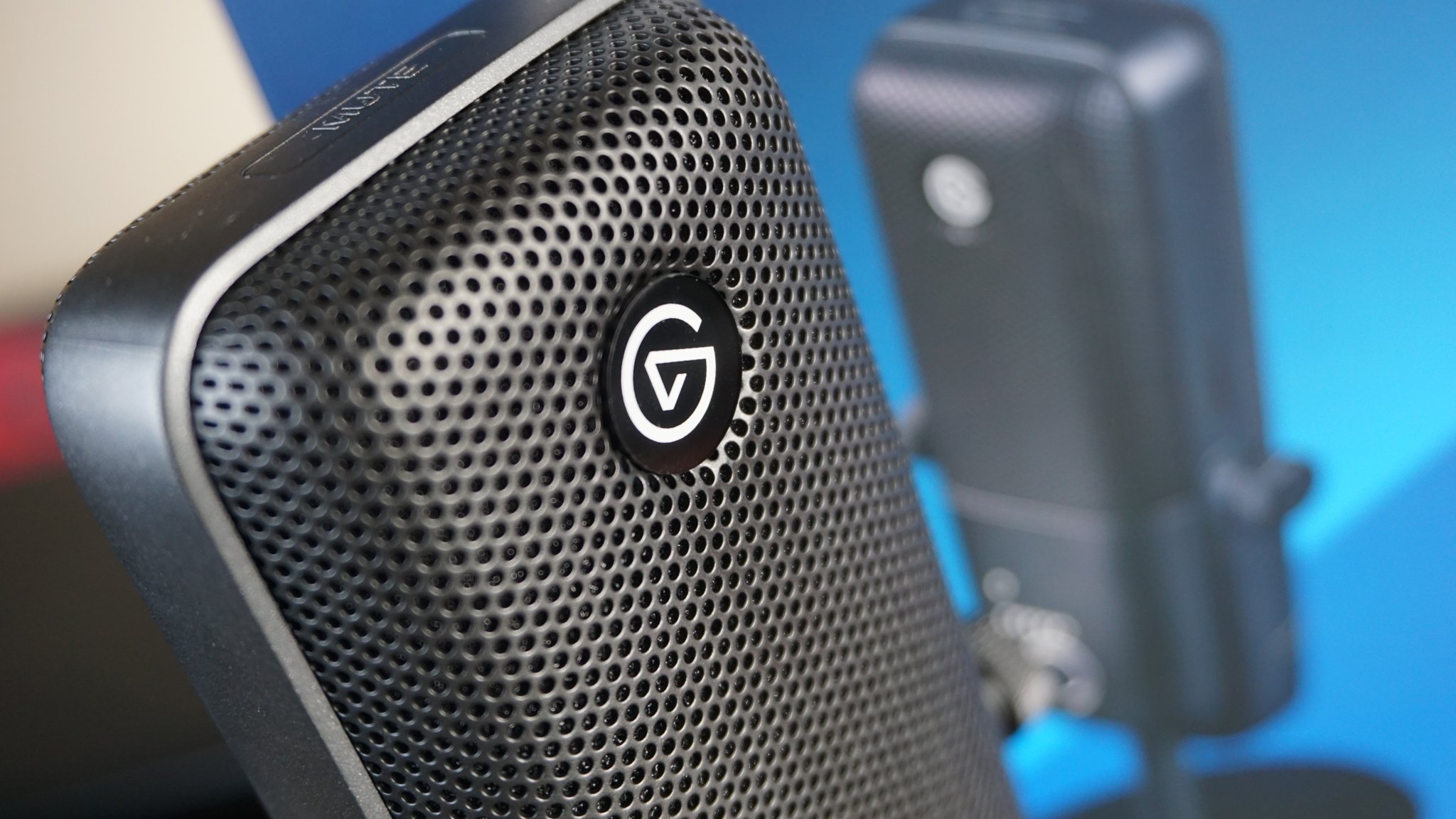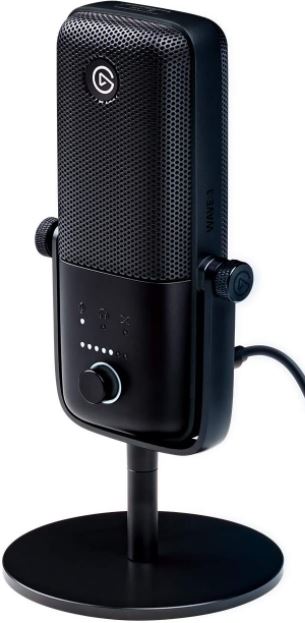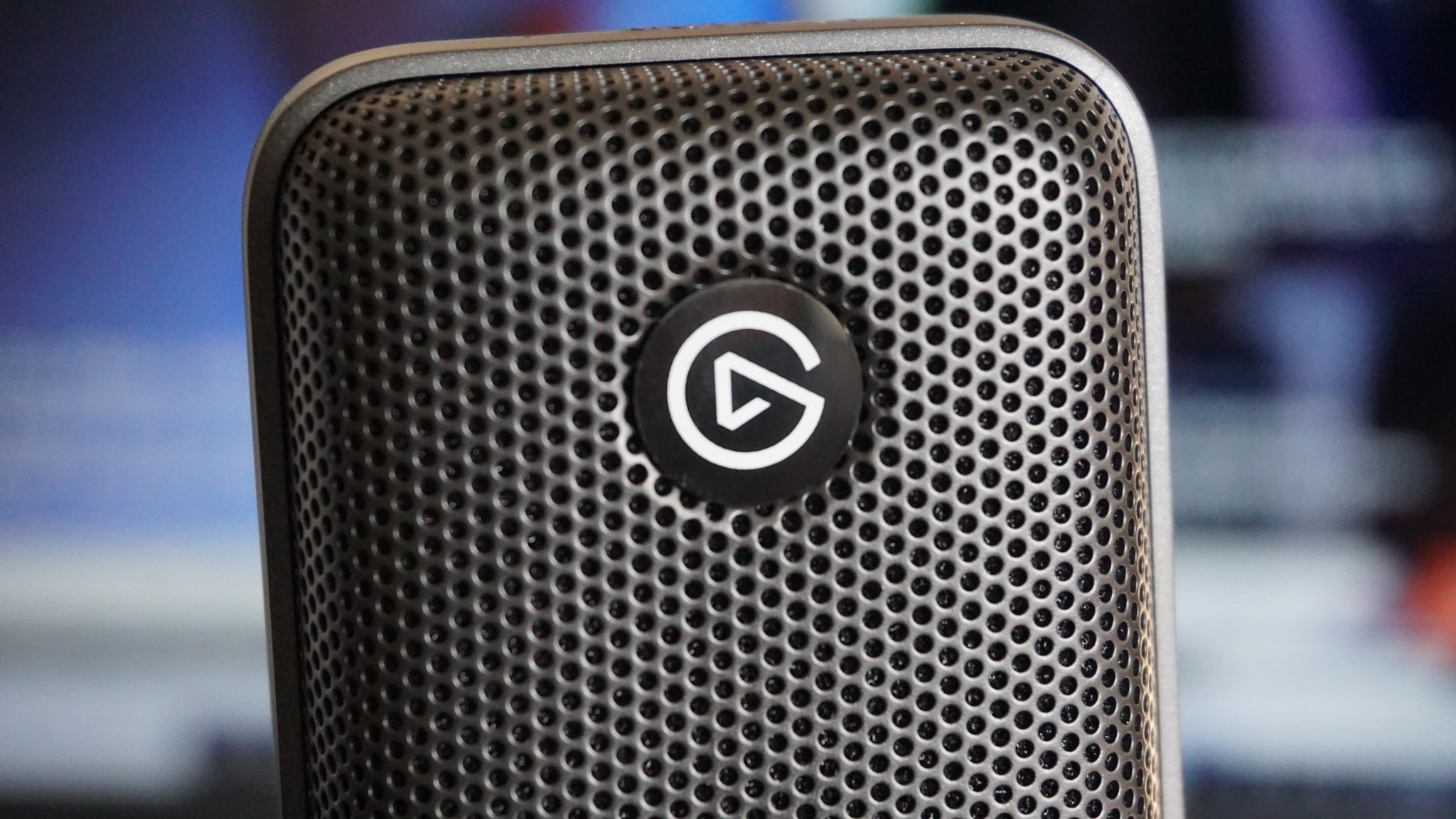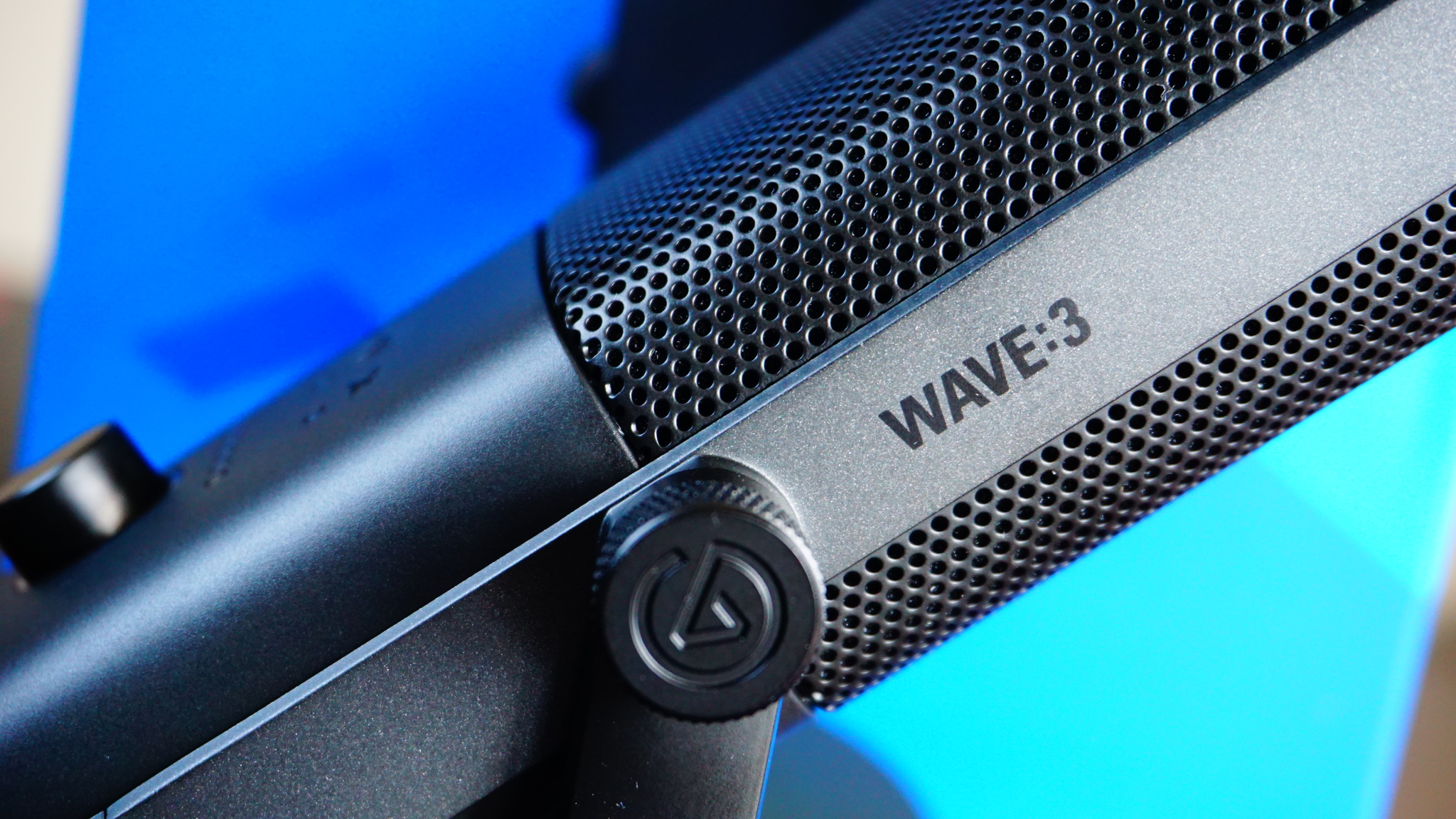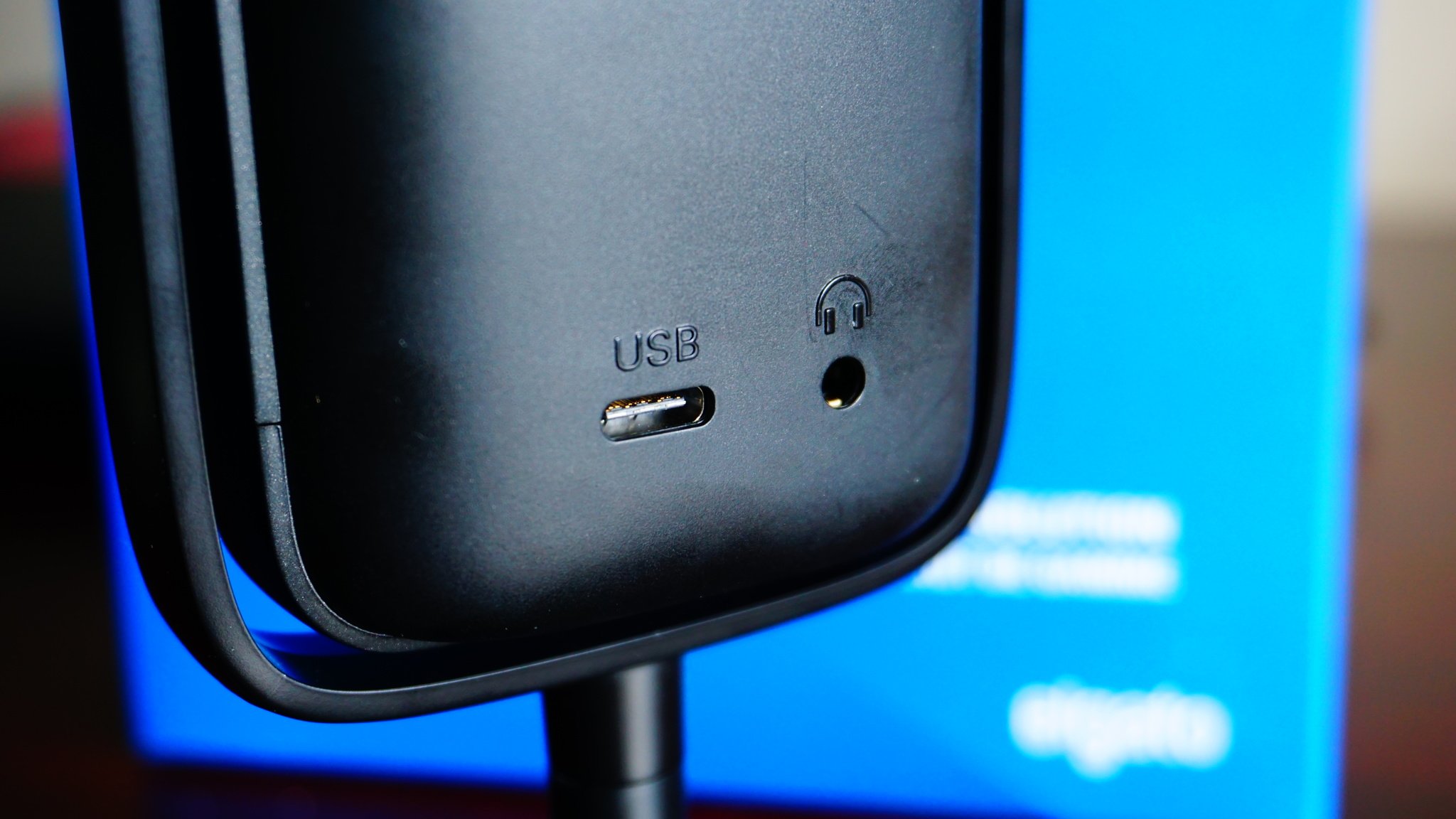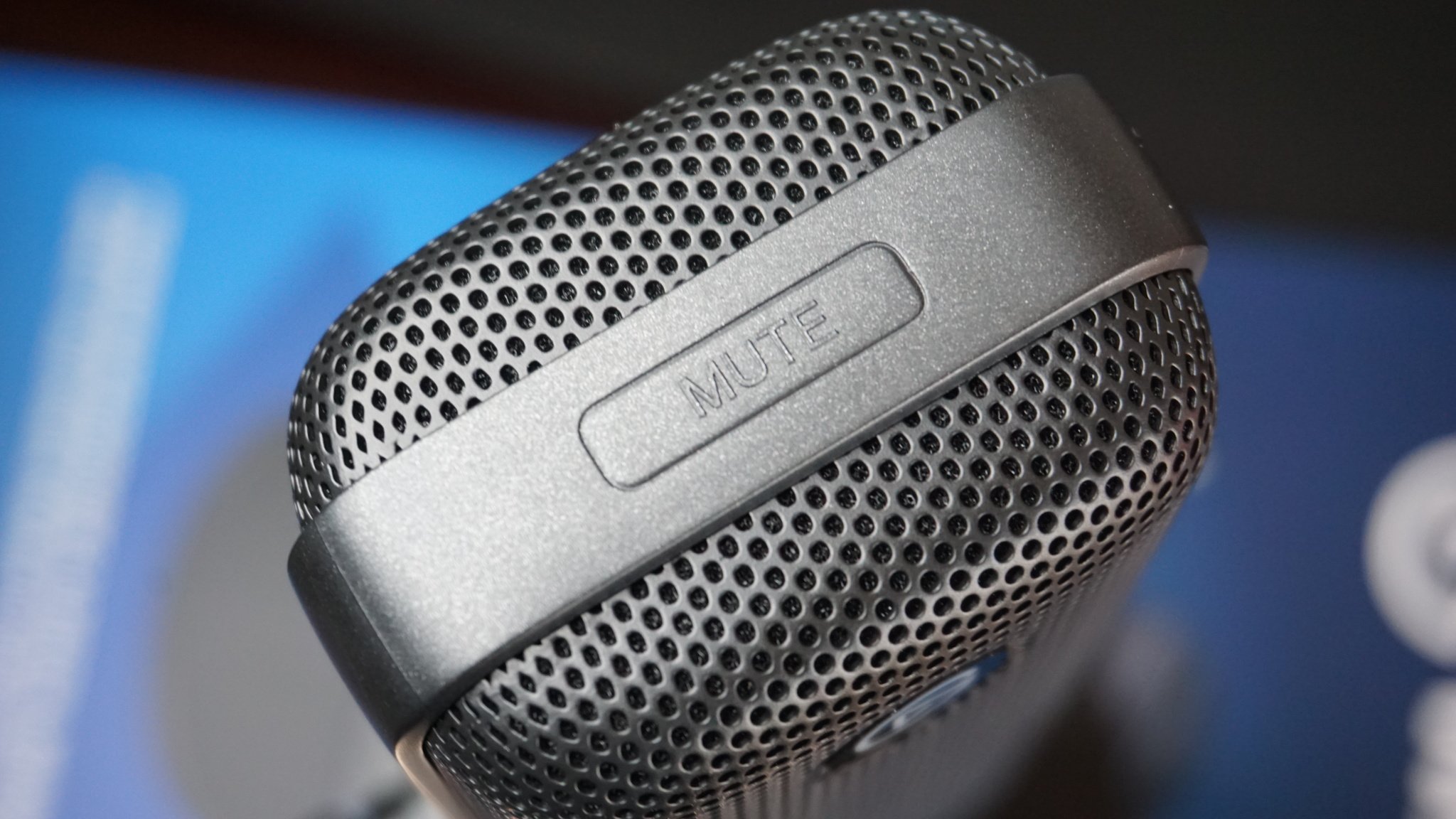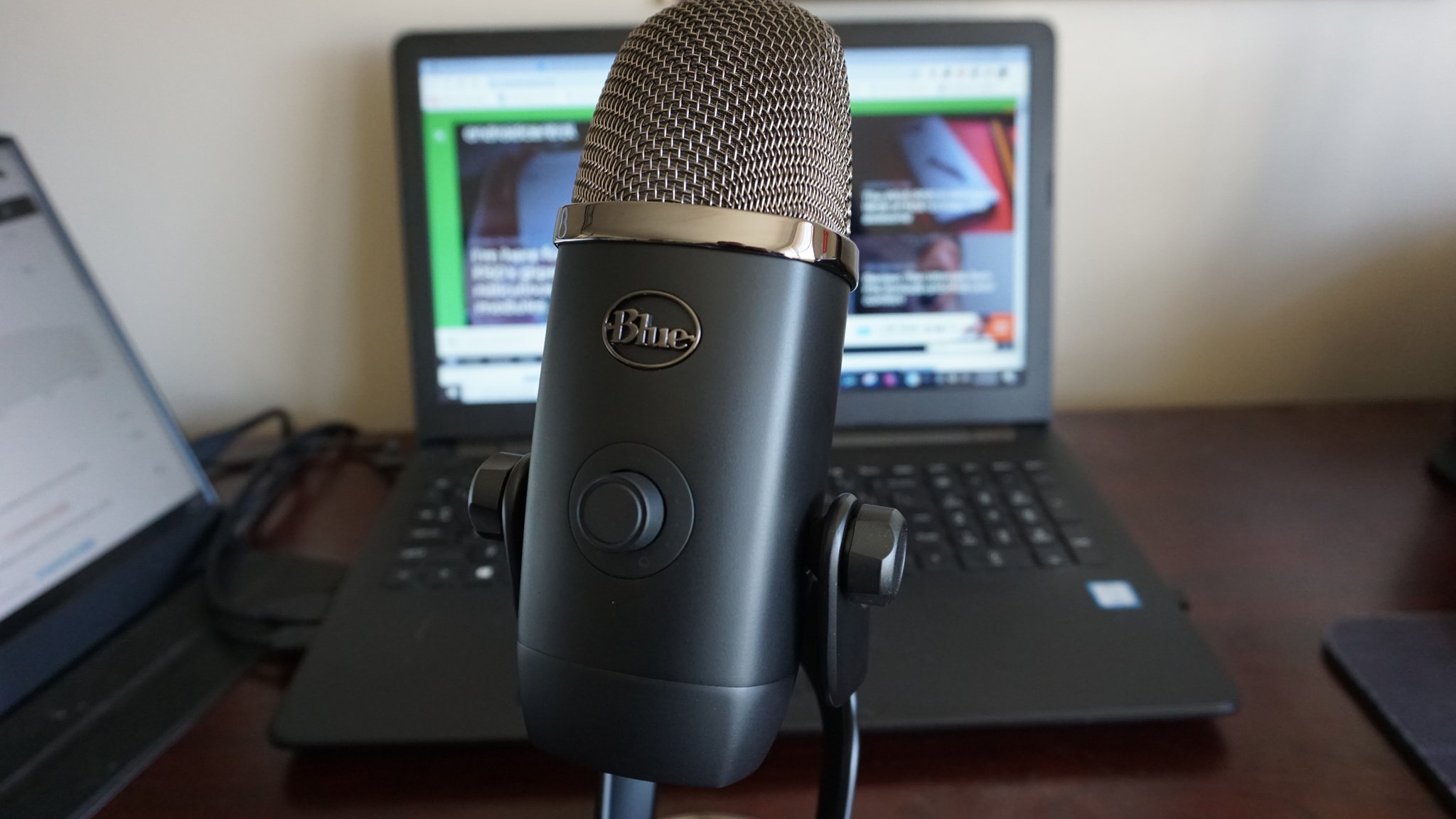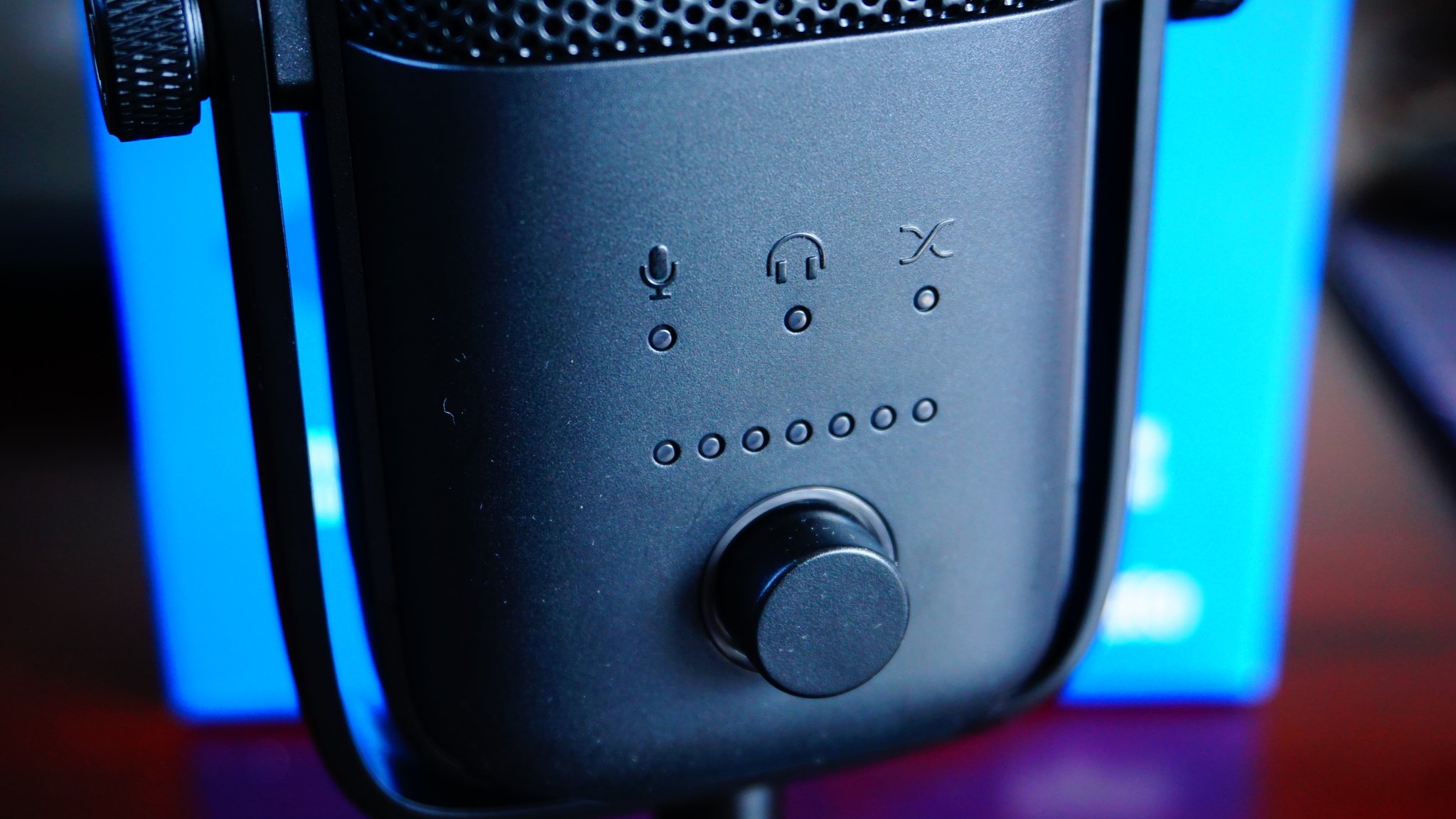Translate
Wednesday, March 31, 2021
Now Twitter lets you add stickers and GIFs to fleets
from Engadget https://ift.tt/3rHY0NL
via IFTTT
Google says it's 'likely' some employees will return to the office in April
from Engadget https://ift.tt/3wkktnt
via IFTTT
OnePlus 8T vs. OnePlus 8 Pro: Which should you buy?
OnePlus 8T
Everything you need
Pros
- Sublime 120Hz AMOLED display
- Android 11 out of the box
- 65W wired charging
- Snapdragon 865 with 5G connectivity
- 12GB RAM and 256GB storage by default
Cons
- No wireless charging
- No IP rating
- Average camera
The OnePlus 8T delivers the latest hardware you can buy today. The phone is powered by the Snapdragon 865 chipset and has 5G connectivity, and you get a flat AMOLED display with 120Hz refresh rate, 12GB of RAM, 256GB of storage, and insane 65W fast charging. Add the fact the phone runs Android 11 out of the box and you get a great overall package.
OnePlus 8 Pro
All the extras
Pros
- Stunning 120Hz AMOLED display
- Exciting cameras
- 30W wired and wireless charging
- IP68 water resistance
- Snapdragon 865 chipset with 5G
- Now on Android 11
Cons
- No 3.5mm headphone jack
The OnePlus 8 Pro takes things to the next level with a curved QHD+ AMOLED 120Hz refresh rate screen, cameras that take great photos in any lighting, Snapdragon 865 with 5G, and 30W wired and wireless charging, along with IP68 water resistance. There's nothing missing here, and the phone has already received the Android 11 stable update.
You should consider the OnePlus 9 series
The OnePlus 8 Pro and 8T continue to be great options in 2021, but if you're looking to upgrade to a new phone, you may want to take a look at the OnePlus 9 and OnePlus 9 Pro. Both phones offer considerable upgrades on the camera side of things, and sport an exciting new design along with faster wireless charging and beefier internal hardware.
With OnePlus launching a new phone every six months, there's always a better device on the horizon. But the company's partnership with Hasselblad over the OnePlus 9 series has resulted in much better cameras over previous generations, and that makes the 2021 flagships that much more enticing.
The OnePlus 8T introduces subtle tweaks to the design and a flat 120Hz AMOLED display along with 65W fast charging, and the OnePlus 8 Pro has all the extras that you'd want from an Android flagship. Should you buy the OnePlus 8T or pick up the 8 Pro? Let's find out.
OnePlus 8T vs. OnePlus 8 Pro: Same hardware with a few key differences
The OnePlus 8T uses the same design and hardware as the OnePlus 8 Pro, but with a few notable differences. First up is how the display is flat on the 8T, making it easier to hold and use.
The OnePlus 8T is also 11g lighter than the 8 Pro even though both phones sport similar batteries. This adds to how much easier it is to use in everyday use. Both devices offer the same metal-and-glass construction and come with Gorilla Glass 5 at the front and back, but the fact the 8T is marginally shorter and lighter gives it an edge.
With IP68 rating and 30W wireless charging, the OnePlus 8 Pro gives you a lot more in terms of extras.
The OnePlus 8T has a new design for the rear camera housing, and it looks much more elegant than the oblong housing on the 8 Pro. The design aesthetic is largely unchanged between both devices, but the subtle tweaks make the 8T look just that little bit more premium.
The OnePlus 8T has a 6.55-inch AMOLED display, with the OnePlus 8 Pro rocking a 6.7-inch AMOLED screen. Both devices offer a 120Hz refresh rate, and the panel quality itself is right up there with the best Android phones available today. The key difference in terms of the panel is that the 8 Pro has a QHD+ resolution, with the 8T limited to FHD+.
Now, the FHD+ panel on the 8T is pretty great in its own right, and you're not really missing out on anything here. However, if you want to use a higher-res panel, that option is available on the 8 Pro, and the best part is that you can use 120Hz refresh rate even with the resolution set to QHD+.
The OnePlus 8 Pro also wins out when we're talking about the extras. The phone has 30W wireless charging and IP68 dust and water resistance. The 8T misses out on both features.
Both the OnePlus 8T and 8 Pro feature the Snapdragon 865 chipset with Sub-6 5G, and they're identical in day-to-day use. Both phones run through just about any scenario with ease, whether that's browsing social media or playing intensive games. You're not going to find any slowdowns here, and the 120Hz panels combined with stereo speakers on both phones make them a delight to use.
Both phones share robust hardware, with the 8T offering 65W fast charging.
You'll find both phones with 8GB/128GB and 12GB/256GB options, but availability is limited by region. The OnePlus 8T, for instance, is only sold in the 12GB/256GB variant in the U.S. — retailing for $600 on Amazon — and even the 8 Pro is only available in the 12GB/256GB option that now costs $699, with the 8GB/128GB variant sold out in the country.
Over in India, the OnePlus 8T starts off at ₹42,999 ($576) for the 8GB/128GB model, and the OnePlus 8 Pro retails at ₹54,999 ($736) for the 8GB/128GB option. Subtle differences exist in the internal hardware: the OnePlus 8 Pro has LPDDR5 RAM and UFS 3.0 storage modules, while the OnePlus 8T has LPDDR4X RAM and UFS 3.1 storage. But the standout feature here is the 65W fast charging on the OnePlus 8T.
The Warp Charge 65 fast charging tech takes just 39 minutes to fully charge the 4,500mAh battery on the OnePlus 8T. So even though the phone lacks wireless charging, the speed on offer with the 65W fast charging standard gives the 8T an edge. The OnePlus 8 Pro, meanwhile, has 30W wired and wireless charging, with the phone taking just over an hour to fully charge the 4,510mAh battery.
Finally, the cameras. Although both devices feature 48MP cameras at the back, the OnePlus 8 Pro takes better photos because of the newer Sony IMX689 sensor. The 8 Pro has a secondary 48MP wide-angle lens that outmatches the 13MP wide-angle module on the 8T. The 8 Pro still doesn't measure up to the likes of the Galaxy Note 20 or the Pixel 5, but it has an edge over the 8T.
OnePlus 8T vs. OnePlus 8 Pro: Specs
| OnePlus 8T | OnePlus 8 Pro | |
|---|---|---|
| Operating system | Android 11 OxygenOS 11 |
Android 11 OxygenOS 11 |
| Display | 6.55-inch 120Hz Fluid AMOLED 2400x1080 (20:9) HDR10+ Gorilla Glass 5 |
6.7-inch Fluid AMOLED 3168x1440 (19.8:9) HDR10+ Gorilla Glass 5 |
| Chipset | Snapdragon 865 1 x 2.84GHz A77 3 x 2.42GHz A77 4 x 1.80GHz A55 7nm |
Snapdragon 865 1 x 2.84GHz A77 3 x 2.42GHz A77 4 x 1.80GHz A55 7nm |
| GPU | Adreno 650 | Adreno 650 |
| RAM | 8GB/12GB LPDDR4X | 8GB/12GB LPDDR5 |
| Storage | 128GB/256GB UFS 3.1 | 128GB/256GB UFS3.0 |
| MicroSD slot | ❌ | ❌ |
| Rear camera 1 | 48MP (IMX586), 0.8um f/1.75, OIS 4K at 30fps |
48MP (IMX689), f/1.78 1.12um, OIS 4K at 60fps |
| Rear camera 2 | 16MP wide-angle, f/2.25 120-degree field-of-view |
48MP wide-angle, f/2.2 119-degree field-of-view |
| Rear camera 3 | 5MP macro, f/2.4 | 8MP, f/2.4 1.0um, OIS, telephoto 3x hybrid zoom |
| Rear camera 4 | 2MP monochrome, f/2.4 | 5MP Color Filter |
| Front camera | 16MP, f/2.4 1080p video, fixed focus |
16MP, f/2.4 1080p video, fixed focus |
| Connectivity | 5G Sub-6, SA and NSA Wi-Fi 6, Bluetooth 5.1 AptX HD, NFC, A-GPS |
5G NSA, Sub-6 Wi-Fi 6 2x2 MIMO, Bluetooth 5.1 NFC< AptX HD, A-GPS |
| Battery | 4500mAh Non-removable |
4510mAh Non-removable |
| Charging | USB-C 3.1 Warp Charge 65 (10V/6.5A) |
USB-C 3.1 Warp Charge 30T (5V/6A) Warp Charge 30 Wireless (20V/1.5A) |
| Audio | USB-C Stereo speakers |
USB-C Stereo speakers |
| Water resistance | ❌ Only on T-Mobile version |
IP68 |
| Security | In-display fingerprint (optical) | In-display fingerprint (optical) |
| Dimensions | 160.7 x 74.1 x 8.4mm 188g |
165.3 x 74.3 x 8.5mm 199g |
| Colors | Ultramarine Green, Lunar Silver | Onyx Black, Glacial Green, Ultramarine Blue |
OnePlus 8T vs. OnePlus 8 Pro: Software
OnePlus managed to differentiate itself on the software side of things, with the OnePlus 8T running OxygenOS 11 based on Android 11 out of the box. The OnePlus 8 Pro has also received the stable update to Android 11, making it one of very few devices that have done so.
So while it's great to see both devices on Android 11, the 8T has a slender edge in this area as it comes with the latest version of Android out of the box. Doing so means it will be updated to Android 13 once it rolls around, and while the 8 Pro is also likely to make the switch, it isn't guaranteed at this point.
OnePlus 8T vs. OnePlus 8 Pro: Which should you buy?
There are a lot of similarities with the OnePlus 8T and 8 Pro, and ultimately, it comes down to how much you value the extras. If you need wireless charging and IP68 water resistance, then the OnePlus 8 Pro is the obvious choice. The phone comes with a higher-res QHD+ display, and the curved design is right up there with the best that Samsung has to offer.
You can't go wrong with either option, but for my money I'd buy the OnePlus 8 Pro in 2021.
The OnePlus 8T has the same 120Hz refresh rate, but comes with a flat AMOLED display that makes it much more comfortable to use. That's the main reason I'm still using the phone even after the review, and after using curved screens for most of the year, it feels refreshing to go back to a flat display.
And while the OnePlus 8T does not have wireless charging, the 65W wired charging ensures you don't have to leave the phone plugged in overnight. The fast charging tech takes just 39 minutes to fully charge the 4500mAh battery on the device.
But the OnePlus 8 Pro wins out on the camera side of things thanks to the IMX689 sensor, and you get more in terms of extras: there's IP68 water resistance, 30W wireless charging, and a QHD+ panel. Considering the 12GB/256GB edition now costs just $700, you aren't paying a lot more than the 8T. So if you want a flagship with all the extras, the OnePlus 8 Pro may just be the ideal option.
OnePlus 8T
Everything you need
$590 at Amazon $600 at OnePlus ₹42,999 at Amazon India
The upgrades you're looking for
The OnePlus 8T has a stunning 120Hz AMOLED panel backed by the latest internal hardware available. The flat display is a joy to use, the phone runs Android 11 out of the box, and with 65W fast charging, you won't need to leave it plugged in overnight. It is missing a few extras, but if you want to maximize value, this is the phone to get.
OnePlus 8 Pro
All the extras
$699 at OnePlus ₹54,999 at Amazon India
Still a great Android flagship
The OnePlus 8 Pro delivers all the features you'd want from a flagship. It has a gorgeous design with a QHD+ 120Hz AMOLED panel, great cameras, outstanding hardware, and 30W wired and wireless charging. If you don't mind shelling out the premium over the 8T, there's a lot to like in the 8 Pro. With the 12/256GB option now on sale, you are getting a great overall value.
from Android Central - Android Forums, News, Reviews, Help and Android Wallpapers https://ift.tt/2GamCwP
via IFTTT
Looking for a NAS to run Plex? These are the best enclosures.
The best network attached storage (NAS) for Plex lets you easily stream your media library on all devices across your home network. The DiskStation DS220+ illustrates this point perfectly — it transcodes content so that any device can play back any file without running into issues, and doubles up as a reliable solution for backing up photos and videos from your connected devices.
1. Synology DiskStation DS220+: Best Overall
Right now, the DiskStation DS220+ is the best NAS you can buy for Plex streaming. The NAS is powered by an Intel Celeron J4025 chipset and comes with 2GB of RAM — with the ability to add another 4GB — and there are two drive bays that can hold 16TB of storage each, taking total storage to 32TB. The DS220+ has two Gigabit Ethernet ports at the back with Link Aggregation, and you can just bridge these ports and double data transfers. There are two USB 3.0 ports as well, and overall, the DS220+ is the best NAS for home use, particularly if you want a robust media server.
The DS220+ works particularly well as a Plex media server. It takes just a few minutes to install and configure the service, and it does a fantastic job streaming your locally-stored media library to all connected devices on your home network. Plex streaming generally falls into three categories. Direct play is when the Plex client (your TV or streaming box) natively handles the video container and just streams the file as-is without any issues. Direct stream is when the client device you're using does not support the container (like .mkv or .m4a), so Plex will then remix the file to a different container and send it to your device.
These two options don't need a lot of resources, and any NAS — including cheap NAS enclosures — will be able to handle the load. The last category, transcoding, is where things get interesting. Plex will transcode files when a client device does not have the requisite video codec (like H.265, HEVC, H.264) and video container, so the service will essentially convert the video to a format that will run on the device and then play it. This is the most CPU-intensive option, and needs a powerful NAS. Then there are inherent limitations to transcoding 4K — like missing out on HDR — so you're better off just streaming your locally-saved 4K content instead of trying to transcode it.
The DS220+ handles 1080p transcodes without any issues and is able to transcode 4K content if you really need to do so, and it is the ideal option for Plex. Synology's software is the best in the industry, and you can do so much more than streaming your Plex library. The DS220+ automatically backs up data with ease, and you can run your own email, audio, video, and even VPN server straight from the NAS. I recommend picking up 4TB Seagate IronWolf drives with the NAS to start off, and if you need more storage, you can get the 6TB model or the 8TB option.
Pros:
- Can handle 4K streaming/transcoding
- Two Gigabit Ethernet ports
- Up to 32TB of storage
- Extensible software
- Robust internal hardware
Cons:
- No eSATA port
- No SSD caching
Best Overall
Synology DiskStation DS220+
The best NAS for Plex in 2021
The DS220+ has robust hardware and two Gigabit Ethernet ports, making it the ideal option if as a NAS enclosure for Plex streaming.
2. Synology DiskStation DS920+: Best For 4K
The DiskStation DS920+ has the same foundation as the DS220+ but with a few key upgrades. You get a faster Intel Celeron J4125 chipset, 4GB of RAM out of the box, M.2 slots for SSD caching, and four drive bays that can hold up to 64TB of storage. You get the same dual Gigabit Ethernet ports, two USB 3.0 ports, and there's also an eSATA port at the back.
The DiskStation DS920+ is an ideal Plex media server if you're looking to stream 4K content on your devices. The DS920+ handles 1080p transcodes just fine, so if you're using an older TV or a device that doesn't have the latest video codecs and containers, the NAS will decode the file and play it on the TV. Now, the DS920+ transcodes 4K as well, but you should not go this route. If you're building a 4K media library, your best route is to stream media directly on the TV or streaming box.
4K transcoding takes several magnitudes more power than 1080p transcodes, and most devices that can play back 4K content have the requisite video codecs and containers. So when it comes to playing 4K files on your home network, the only factors you need to consider are network bandwidth — 4K files have a bitrate of over 100Mbit — and storage. That's where the two Gigabit Ethernet ports on the DS920+ come in handy, and the four drive bays that can hold a total of 64TB of storage.
If you think that the 64TB of storage may not be enough, Synology has a DX517 expansion unit that adds five drive bays to your DS920+ — that's another 80TB of storage. If you're looking for drives to fill up the DS920+, the 8TB IronWolf NAS hard drive is the ideal option.
Pros:
- 4K Plex streaming/4K transcode
- Up to 64TB of extensible storage
- M.2 slots for SSD caching
- Exhaustive software features
- Two Gigabit Ethernet ports
Cons:
- No 10GbE (10 Gigabit Ethernet) ports
- Fewer DRAM slots than predecessor
- Expensive
Best For 4K
Synology DiskStation DS920+
The perfect four-bay Plex media server
With powerful hardware and the ability to handle several 4K Plex streams at once, the DS920+ is the ideal 4-bay media server.
3. Asustor AS5202T: Best For Connectivity
Asustor's AS5202T is a great choice if you're looking for a robust Plex media server. This two-bay NAS enclosure has dual 2.5 Gigabit Ethernet ports, giving you much more headroom for data transfers. But the best part about the AS5202T is how it comes with an HDMI port, allowing you to plug the NAS directly into your TV.
The NAS is powered by the Intel Celeron J4005 chipset and has 2GB of RAM out of the box, and you can add up to 32TB of storage across the two drive bays. The NAS lets you install Plex without any hassle, and you get the option to run Docker containers, back up data automatically on all connected devices, and so much more. Like the DS220+ and DS920+, you get the ability to stream Plex at 4K without any issues, and the hardware here is able to transcode 4K as well.
Asustor has a set of tools that let you stream content directly to Twitch or YouTube, making the AS5202T a decent option for content creators as well. The hardware on offer here makes the AS5202T a versatile option for Plex, and you can get started with 8TB IronWolf NAS drive if you're picking up this particular model.
Pros:
- 4K Plex streaming/4K transcode
- HDMI port for connecting to TV
- Two 2.5Gbps ports for next-gen connectivity
- Decent set of software features
- Robust internal hardware
Cons:
- Gets pretty loud
Best For Connectivity
Asustor AS5202T
The ideal NAS for content creators
The AS5202T delivers next-gen connectivity and has reliable hardware that makes it a fantastic choice as a 4K Plex solution.
4. Asustor AS5304T: Best Four-Bay Connectivity
If you looked at the AS5202T above and went, "this looks good, but I need more drive bays" then the AS5304T is the NAS for you. The AS5304T shares the same design and similar internal hardware as the AS5202T, but you get four drive bays that can hold a total of 64TB of storage.
The NAS is powered by a newer Intel Celeron J4105 chipset and you get 4GB of RAM out of the box, with the ability to add another 4GB. You also get three USB 3.2 ports, dual 2.5 Gigabit Ethernet ports at the back, and an HDMI 2.0 out that lets you connect the NAS to a TV.
The AS5304T has the same set of software features as the AS5202T, and the increased memory and more powerful chipset means the NAS is particularly great as a Plex media server. You'll be able to stream 4K content to several devices at once, and should you wish to do so, you can rely on 1080p hardware transcodes and even 4K. The 8TB IronWolf NAS drive is the best pairing for the AS5304T.
Pros:
- 4K Plex streaming/4K transcode
- HDMI port for connecting to TV
- Two 2.5Gbps ports for next-gen connectivity
- Great value
- Robust software
Cons:
- Runs hot
- Fan gets loud
Best Four-Bay Connectivity
Asustor AS5304T
Turbocharge your media server
With dual 2.5Gbps ports, an HDMI 2.0 port, four drive bays and a robust software, the AS5304T is the ultimate four-bay Plex server.
5. Synology DiskStation DS220j: Best Entry-Level Plex NAS
What if you don't care about 1080p/4K transcoding and just want an affordable NAS that streams files from Plex to your devices? Then the DiskStation DS220j is the best option for you. The NAS has two drive bays and features the Realtek RTD1296 along with 512MB of RAM, a Gigabit Ethernet port, and two USB 3.0 ports.
It may not be the fastest NAS around, but it runs Plex fine and streams content to your devices without any issues. You miss out on transcoding, but for direct streaming, this is a great option. The value on offer here makes the DS220j a particularly great choice, and the fact that it offers the same robust software features as Synology's costlier models means you're not missing out on much.
If you're looking for a budget Plex media server, the DS220j is hard to beat right now. Pair the NAS with a few 4TB IronWolf hard drives and you'll have a robust media server that can stream Plex to all connected devices in your home.
Pros:
- 4K Plex streaming
- Incredible value
- Gigabit Ethernet connectivity
- Runs quiet
- Up to 32TB of storage
Cons:
- Limited RAM
- Doesn't transcode
Best Entry-Level Plex NAS
Synology DiskStation DS220j
The best budget Plex media server
The DS220j has robust software and holds up incredibly well as a Plex media server, making it the ideal entry-level option.
6. TerraMaster F2-221: Best Value
TerraMaster is a well-known manufacturer that's focused on the value segment, and the F2-221 is a great choice if you want a value-focused NAS enclosure for Plex. The NAS is powered by the Intel Celeron J3355 chipset and has 2GB of RAM out of the box, and you can fit a total of 32TB of storage in the two drive bays.
The F2-221 also has two Gigabit Ethernet ports and two USB 3.0 ports. You also get a decent set of software features, but the standout point here is that the F2-221 can stream 4K files without any hassle and transcode 1080p content easily. There's no 4K transcode here, but like I outlined above, that's not really a major omission.
If you don't need some of the more productivity-focused features and are in the market for value, the F2-221 is a fantastic overall choice. Just pick up a few 4TB IronWolf hard drives with the NAS and you'll be able to set up a great Plex server.
Pros:
- 4K Plex streaming/1080p transcode
- Great overall value
- Two Gigabit Ethernet ports
- Holds up to 32TB of storage
- Decent software
Cons:
- No eSATA port
Best Value
TerraMaster F2-221
The ideal value choice
TerraMaster's F2-221 gives you all the features you're looking for in a Plex media server for less than its rivals.
7. QNAP TS-451+: Best Four-Bay Value
QNAP's TS-451+ is a reliable workhorse that excels at the basics. The NAS is powered by an Intel Celeron J1900 chipset and you get 2GB of RAM out of the box, an HDMI port for connecting it to your TV, and a remote control.
The NAS handles Plex 4K streaming without any issues whatsoever, and you get hardware 1080p transcoding as well. There are four USB 3.0 ports at the back, two Gigabit Ethernet ports, and with four bays that can hold a total of 64TB of storage, you won't need to worry about running out of storage on this NAS.
You also get a decent set of software options on the NAS, including backing up media and running virtual machines, and for what you're ultimately paying here, you are getting excellent value. The one downside is that the software interface doesn't look as modern as what you get with Synology. To get started, all you need is a few 6TB IronWolf drives or the 8TB variants and you get a powerful Plex media server.
Pros:
- 4K Plex streaming/1080p transcode
- HDMI port lets you connect to a TV
- Four USB 3.0 ports
- Amazing value
Cons:
- Software not as polished as rivals
- Limited RAM out of the box
Best Four-Bay Value
QNAP TS-451+
A great value-focused Plex server
The TS451+ has an HDMI port and a remote control, and the robust hardware combined with the value makes this a great Plex server.
8. Synology DiskStation DS1520+: Best For Enthusiasts
The DiskStation DS1520+ is an excellent option if you're looking for a larger NAS enclosure for Plex. The 5-bay NAS is powered by the Intel Celeron J4125 and comes with 8GB of RAM out of the box, and you can add up to 80TB of storage natively.
A differentiating feature is the two eSATA ports, through which you'll be able to add up to ten additional drives. The extensibility makes the DS1520+ an exciting choice, and it delivers excellent performance for Plex. You'll have no issues transcoding 4K content on the fly, and there are four Gigabit ports at the back.
You'll also find M.2 slots for SSD caching, and the NAS as a whole is a fantastic overall choice if you're interested in a high-end enclosure for Plex streaming.
Pros:
- 4K Plex streaming/4K transcode
- Four Gigabit Ethernet ports
- Two eSATA ports
- Outstanding performance
- M.2 slots for SSD caching
Cons:
- Costly
Best For Enthusiasts
Synology DiskStation DS1520+
A truly outstanding NAS
The DS1520+ is a beastly NAS for Plex — it does 4K transcodes with ease, has plenty of storage and memory, and four Gigabit ports.
The best NAS for Plex is the DiskStation DS220+
Right now, if you're looking to pick up a NAS for Plex streaming, the best option is the DiskStation DS220+. The upgraded internal hardware makes it an enticing model in this category, and with two Gigabit Ethernet ports and robust software features, the NAS has the basics covered.
Plex media server is available natively on the DS220+, and you can install the Plex client (for streaming videos) on just about every platform out there. From smart TVs to Android, iOS, Windows, macOS, and Linux, Plex makes it about as straightforward as it gets to stream your locally-streamed media collection on your connected devices.
The DS220+ does a fantastic job with streaming Plex files in 4K, and it also has hardware-assisted 1080p transcodes that work reliably enough. It's not recommended to use a NAS to transcode 4K files, but as long as you're only looking to stream them to various devices, the DS220+ is the ideal NAS enclosure for your needs.
Credits — The team that worked on this guide
![]()
Harish Jonnalagadda is the Asia Editor of Android Central. A reformed hardware modder, he now spends his time writing about India's burgeoning phone market. Previously, he used to ponder the meaning of life at IBM. Contact him on Twitter at @chunkynerd.
from Android Central - Android Forums, News, Reviews, Help and Android Wallpapers https://ift.tt/3aXTHXI
via IFTTT
Android 11: Everything you need to know!
Android 11 brings much-needed privacy and security features alongside exciting UI changes.
Android 11 continues to push Google's vision of Android forward. With Android 11, Google is making a few tweaks to refine the platform instead of making wholesale changes. Privacy is a big focus with Android 11, with Google introducing one-time permissions and granular control over what sort of data you share.
There are new features to get excited about as well — the power button menu picked up a massive overhaul, the Conversations view does a great job highlighting your messages, and there are little tweaks throughout the interface that give it an added polish.
Android 11 is powering the best Android phones of 2021, and manufacturers are doing a better job rolling out the update to their 2020 phones. So here's everything you need to know about all the new features in Android 11 and when your phone will receive the update.
Jump to:
- Release date
- Custom skins
- Review
- Messaging features
- Permissions
- Screen recorder
- Display features
- 5G connectivity
- Pixel 5
- What about Android 12?
Is Android 11 available for my phone?
Following months of Developer Previews and Betas, Google launched the final build of Android 11 on September 8, 2020. The update was available for Pixel phones on day one as per usual. This year, Android 11 was also available on the same day for select handsets from the likes of OnePlus, Xiaomi, OPPO, and Realme.
That's a big step forward for Android updates as a whole, but there's also still plenty of work that's left to be done. Samsung is now rolling out One UI 3.0 based on Android 11 to its flagships and mid-range devices, but the likes of Motorola, Nokia, Sony, and others are yet to roll out the update.
While that's certainly annoying, we're making things as easy as possible for you by tracking any and all Android 11 updates as we learn more about them.
What's going on with Android 11 on non-Pixel phones?
As noted above, this year's Android update rollout was a bit different compared to past releases. Instead of Pixels being the only phones treated to the new software, handsets from other select manufacturers were also treated to Android 11 in some form.
Let's first look at Samsung, which is marketing its Android 11 update as One UI 3.0/3.1. Most of the core design principles remain in place, but there is a lot that's new to check out. Samsung's touting things like an improved lock screen, a more customizable always-on display, new accessibility tools, and more.
Samsung has already delivered the Android 11 update to most of its 2020 phones, and is now working its way down the list to its 2019 phones. It shifted to the One UI 3.1 build in recent months that debuted on the Galaxy S21 series.
We should also mention OxygenOS 11, which is the Android 11 update for OnePlus phones. OxygenOS 11 introduced a major design shift for OnePlus, with the company moving away from its stock Android aesthetic and embracing design elements found in Samsung's One UI interface.
Nokia has also kicked off its Android 11 update rollout, with the Nokia 8.3 5G picking up the stable update starting February 8. HMD has lagged behind in this area over previous years, but with the Nokia 8.3 now on Android 11, we should see the update rolling out to other Nokia devices in the coming months.
Then there's Xiaomi. The stable MIUI 12 update based on Android 11 is now rolling out to the Mi 10 series and Redmi Note 9 devices and should make its way to other Xiaomi phones very soon. We've rounded up Xiaomi's Android 11 rollout timeline to make it easier for you to learn when your phone will get the update.
LG has also started to roll out the Android 11 update, with the V60 and the Velvet receiving the stable build. Lastly, we have ColorOS — the custom Android interface used on OPPO smartphones. ColorOS 11 is rolling out now to OPPO devices, and it offers a lot of exciting improvements. In addition to the usual Android 11 goodies, some other highlights include a customizable dark mode, a power-saver mode to extend battery life, and a new feature called OPPO Relax 2.0 that aims to help you unwind and fall asleep at night.
Have we reviewed Android 11?
We'll dive into some of Android 11's biggest features below, but before we do any of that, we should address the elephant in the room — is Android 11 any good? The short answer, yes — it is very, very good, as per our Android 11 review.
Understandably, some people may find Android 11 boring or not very different from Android 10, but the fact of the matter is that Android no longer needs massive overhauls every year the way it used to. The core Android experience is darn good, and Android 11 elevates it even more. All of the conversation improvements are great for streamlining notifications, more powerful permissions are always something we're happy to see, and the new power button menu adds a ton of extra functionality.
There are a couple of changes we aren't completely in love with (namely the new multitasking window and Suggested Apps feature for the home screen), but those things are easy to overlook. The vast majority of what Google did with Android 11 was for the better, and the result is software that's more functional and enjoyable to use.
How do Android 11 chat bubbles work?
As mentioned above, there isn't one single overhaul or massive change found with Android 11. Instead, it's a mix of many small tweaks here and there. A few of them focus on improving your messaging experience, with Google offering a lot in this department.
First on the list, we have chat bubbles. Similar to what Facebook's offered for years with its Messenger app on Android, chat bubbles in Android 11 hide your ongoing conversations in little bubbles on the side of your screen. You can move the bubbles around, and tapping on them reveals that specific conversation. The Bubbles API is available for all messaging apps, with Google encouraging developers to adopt it.
In another effort to make sure you can get to your messages as quickly as possible, Android 11 introduces a dedicated conversation section in your notification shade that offers instant access to any ongoing conversations you have. It also makes it easier for your messaging notifications to stand out from others, ensuring you never miss an important text ever again.
Speaking of messages and notifications, Android 11 makes it possible to send images directly from the notification shade when replying to a message.
What's new with permissions in Android 11?
Looking back on Android 10, one of its highlights was its improved handling of app permissions. Android 10 gave users more control over applications and what they could access, and Android 11 keeps this train rolling with a wonderful new addition.
Now, when an app asks for permission to use sensitive features like your location, microphone, or camera, you can choose to only grant it access on a one-time basis. The app will be able to use that permission during that instance of you using the app, but the permission is revoked as soon as you leave it. The next time you use the app, and it wants to use that permission, it needs to be granted access again.
Giving apps permission to these aspects of your phone should not be taken lightly, so we're thrilled to see Google giving users more control over their data like this.
On the subject of permissions and privacy, we had the opportunity to sit down and talk with Charmaine D'Silva — Product Manager and privacy specialist over at Google. She helped give us a deeper understanding of how some of these features came to be and why they're so important. If you have a few minutes to check it out, the interview's definitely worth a read.
Does Android 11 have a built-in screen recorder?
For the past few Android releases, we've been patiently waiting for Google to add a built-in screen recorder. It's not something you'll use every day (if ever for some people), but the fact that such a basic function isn't baked into Android at its core is getting annoying.
Thankfully, Android 11 finally changes that. This Android version does include the feature, accompanied by a clean UI and toggles for recording audio and showing touches with your recording. If you want to know how, here's our guide on how to record your phone screen on an Android phone.
There's not much else to say about this, other than the fact that we're glad we can finally put this feature request to bed.
Is Android 11 compatible with folding phones?
If there's been a place of notable advancement in the Android space, it's been with displays. Companies are doing what they can to offer the best and most exciting smartphone screen possible, and as great as this is, Android needs to catch up with better support for all of these advancements.
Folding phones are proving to be quite popular so far, and especially with devices like the Galaxy Z Flip and Motorola RAZR that have the "flip phone" folding design, Android 11 adds the "hinge angle sensor API" so apps can easily detect the hinge of these folding phones. With this information, developers can adapt their apps to work around the hinge and create unique experiences because of that (like how Google Duo changes its UI when you do a half-fold on the Z Flip).
The other big upgrade displays have seen has to do with faster refresh rates. It's no longer uncommon for phones to ship with screens that refresh at 90Hz or 120Hz, and Android 11 allows developers to take better advantage of these powerful displays. Developers can select which refresh rate their services should run at, and if the developer determines their app looks best at 90Hz or 60Hz, they can make that decision and have the phone's display change its refresh rate accordingly when using that app.
How does Android 11 work with 5G?
5G is finally starting to make its way to people, and more and more folks have started connecting to the next generation of wireless data. To ease the transition, Android 11 adds a very important "Dynamic Meterdness API."
That may not sound very exciting on paper, but it essentially allows phones to take full advantage of all the power 5G brings.
If the API detects that you're connected to an unlimited 5G signal, you'll access the highest possible quality for videos and graphics. The potential for 5G is pretty darn cool, and this API ensures you take full advantage of the speeds available to you.
What phone should I get for the best Android 11 experience?
Whether you want to be among the first to get Android 11 or experience it the way Google intended, the Pixel 5 is the phone for you. It's the newest flagship Pixel currently available, and if you prefer metal over plastic or glass, it's a hard phone to ignore.
The Pixel 5 is all about delivering a flagship-quality Android experience for a relatively low price, and in these regards, it succeeds tremendously. Google crammed a lot into the Pixel 5, including phenomenal cameras, an OLED display, good performance, long battery life, and more. The design is a little plain, but the phone's also a great size for one-handed use.
Best of all, the Pixel 5 and other Pixel devices get quarterly Feature Drops from Google, bringing new features to the Android 11 experience without requiring a full-scale platform update. The most recent Feature Drop was delivered on December 7, 2020.
When is Android 12 coming?
Google served up the first Android 12 developer preview on February 18, and there are a few user-facing changes. The notification shade has a cleaner design, and there's a dedicated snooze button that lets you mute notifications with ease.
Android 12 is also set to add scrolling screenshots, but the feature isn't quite live at this moment. And while the home screen UI itself is unchanged from Android 11, there's now an option to set a 4x5 grid. You can also easily share Wi-Fi with Nearby Share, making it easier for others to connect to your Wi-Fi network.
Interestingly, a new change in Android 12 is Silky Home, a hidden feature flag that drastically alters the look of the Settings page. In short, it makes the Settings page look similar to what Samsung offers with One UI, with large headers and menu elements sitting further below on the page.
The first public beta of Android 12 will arrive in May, with a stable release sometime after August. We'll have more to share around Android 12 and when your phone will get Android 12 in the coming months. For now, the focus for device makers is getting the Android 11 update out the door.
from Android Central - Android Forums, News, Reviews, Help and Android Wallpapers https://ift.tt/32bdTBc
via IFTTT
Verizon is offering up to $1000 off a new phone for your broken trade-in
Verizon wants your broken phones.
What you need to know
- Verizon has announced a new trade-in deal that includes broken smartphones.
- The trade-in amount will depend on the phone model and its condition.
- The deal will start April 1, and Verizon assures it's not a prank.
Tomorrow is April Fool's Day, although no one really has the patience for it. However, Verizon's new trade-in deal begins tomorrow, and it's a bit hard to believe. That's because the company is giving new customers up to $1000 when they trade in broken smartphones for a new one. That's right, Verizon wants your dead, cracked, water-damaged phones, and it'll give you money towards an upgrade to one of the best Android phones.
To take advantage of this deal, you can be either a new or existing customer, although the offer isn't as robust if you're already on the network. For example, existing customers trading in for a new smartphone will receive up to $440 of trade-in credit. That's still not bad, especially when you're looking at getting one of the best cheap Android phones. Meanwhile, new customers that port their numbers are eligible for $800 worth of trade-in credit plus an additional $200 e-gift card. That would nearly cover the cost of a Samsung Galaxy S21 Ultra, which retails on the carrier for $1200.
It's important to keep in mind that trade-in amounts depend on the phone model and the condition it's in. The deal also requires users to be on one of the best Verizon plans, such as Do More, Play More, or Get More Unlimited. In addition to the sweet trade-in deal, new and existing customers can still take advantage of the Disney Bundle that includes Disney+, Hulu, and ESPN+, not to mention how this kind of trade-in deal could potentially help reduce electronic waste.
The deal may sound too good to be true, but Verizon assures us it's not a joke. The offer is only available for a limited time, so grab that broken LG G8 from your drawer and check with Verizon on April 1 and find out just how much it's worth.
from Android Central - Android Forums, News, Reviews, Help and Android Wallpapers https://ift.tt/2PgvqGh
via IFTTT
There's a Google-branded Fiat 500 range now
from Engadget https://ift.tt/39xzGbg
via IFTTT
The Morning After: SpaceX lost another Starship prototype
from Engadget https://ift.tt/3sFTCQy
via IFTTT
Which is the best cheap Chromebook for personal use?
Chatting with the AC forums.
Whether for light work or surfing the web on the couch, there's nothing like one of the best Chromebooks to get the job done. I'm partial to the Lenovo Chromebook Duet (pictured above) for my leisurely activities, but there are many other affordable options out there. Whether you purchase a new Chromebook on sale or buy used, you're getting more computer for longer than ever, with newer models having AUE (auto expiration dates) stretching out up to eight years.
Over on the AC forums, there was a bit of discussion about the best options in the $200 Chromebook space. Several folks mentioned the Duet, as well as the ASUS CM3.
 walterg503-25-2021 02:03 AM“
walterg503-25-2021 02:03 AM“When my Acer C720 reached EOL, I started looking for a replacement. Because of photo editing I was doing I got a laptop instead. I miss having a chromebook. So with a low budget of $200 I'm looking for a something for web browsing and watching Netflix, or Hulu, etc. Acer Spin 311, or Cb311 comes to mind. The Chromebook can be new, refurbished or gently used. I haven't been...
Reply
 Kizzy Catwoman03-25-2021 05:34 AM“
Kizzy Catwoman03-25-2021 05:34 AM“The lenovo duet I think it is called is around $250 brand new. It got good reviews. B. Diddy has got the lenovo I am talking about. He might pop by to clarify me.
Reply
 B. Diddy03-25-2021 02:46 PM“
B. Diddy03-25-2021 02:46 PM“Absolutely, the Lenovo Chromebook Duet is a great versatile device that works well as both a Chromebook and pseudo-Android tablet. It comes in a 64 GB and 128 GB SSD version, with the bigger one retailing for $249 at Best Buy (although it sometimes goes on sale for around $230 or so). You might be able to find the 64 GB version for closer to $200, but since you can install Android apps, I'd...
Reply
 walterg503-31-2021 04:45 AM“
walterg503-31-2021 04:45 AM“Like to see the reviews on the Asus CM3 when it comes out. Single usbc port, but it also has a headphone jack. If the keyboard connection is better, it would definitely be on my list. Price depending, of course.
Reply
Now we want to hear from you — Which is the best cheap Chromebook for personal use? Give us your best recommendations!
from Android Central - Android Forums, News, Reviews, Help and Android Wallpapers https://ift.tt/3mfouoQ
via IFTTT
Elgato Wave 3 microphone review: Giving the best mics a run for their money
Elgato is making waves with the Wave 3. I won't apologize for that pun.
After spending some time testing out the Yeti X microphone, I was able to try the Elgato Wave 3, another that came up frequently when I was researching what mics people prefer to use when game streaming. You'll find a lot of people swear by one or the other — someone even commented on a tweet regarding my Yeti X review to say that the Wave 3 was better — but I find them fairly comparable. I have a little less to complain about with the Wave 3, but they're both excellent in terms of audio quality.
The Elgato Wave 3 can easily stand beside the best microphones for PS5 and even just some of the best streaming equipment in general. If you're a professional or amateur streamer, the Elgato Wave 3 should definitely be on your radar.
Elgato Wave 3
Bottom line: The Elgato Wave 3 stands tall among the best USB microphones out there. With tap-to-mute functionality, sound mixing, and clear audio, it's definitely a winner for professional and amateur streamers alike.
The Good
- Tap-to-mute
- Gain, mix, and volume controls
- Clipguard technology to prevent distortion
- Excellent audio
The Bad
- Only one polar pattern
$140 at Amazon $140 at Best Buy
Elgato Wave 3: Price and availability
A relatively recent product, the Elgato Wave 3, a successor to the Wave 1, was introduced in June 2020. It's available at most large retail chains like Amazon and Best Buy for $160. Occasionally you can find it on sale for $140. Sites that host a lot of third-party sellers are wild cards with their prices, with Walmart listing it for over $200. It only comes in one color, so what you see is what you get.
Elgato Wave 3: What's great
| Category | Spec |
|---|---|
| Weight | 1.3 lbs |
| Dimensions | 6.0" x 2.6" x 1.6" |
| Cable length | 8.25' |
| Frequency response | 70Hz to 20kHz |
| Condensers | 17 mm Electret |
| Polar patterns | Cardioid |
| Ports | USB-C 3.5mm jack |
In terms of presentation and design, the Wave 3 looks great. All in black aside from the logo, its thin, rectangular build is a welcome change compared to some of the market's stockier options. I can appreciate wacky colors or RGB lighting on the right product, but sometimes you don't want an accessory that immediately pegs you as a gamer. Though it's meant for streaming, the Wave 3 wouldn't feel out of place in a board room or office setting.
As for the most important aspect, its audio quality, you'll be incredibly pleased here. The Wave 3 delivers clear sound and even has Clipguard technology to prevent distortion when you get too loud. That's not to say it works perfectly — because you can definitely still yell loud enough for it to sound awful — but the threshold is much higher, so it won't happen as often.
Delivers clear sound and has Clipguard technology to prevent distortion.
What I think is an unsung feature on microphones is tap-to-mute. Plenty of microphones allow you to mute them by pressing a dial or button, but this almost always results in an audible click that I can't stand when recording a podcast. With tap-to-mute, you can mute it silently by simply tapping the top of the microphone. That little detail is underappreciated and something I wish more companies would consider when designing their products.
The front of the microphone below the grille also features indicators and a dial for your gain, volume, and audio mixing. This isn't uncommon on premium microphones like this, but sometimes you'll only find an option to adjust your headset volume or gain. Having all three makes it all the more more appealing.
Elgato Wave 3: What's bad
It's difficult to come up with any complaints here. While not as flashy or fancy as some other microphones may be, it's still a tremendous accessory. The biggest issue you may find is that it only supports one polar pattern (cardioid), limiting the type of recordings you can do. Sorry, ASMRtists.
Though not a problem with the microphone, its Wave Link app is underwhelming, especially compared to what the Yeti X offers with the Logitech G Hub. On the flip side, this does make the Wave Link more user-friendly as you can adjust your audio mixing between several channels.
Elgato Wave 3: Competition
Considering its price point and who it's marketed towards, I'd say the main competition of the Elgato Wave 3 is the Blue Yeti X. While the Yeti X is slightly more expensive, it also features real-time LED metering and a stellar companion app. The Yeti X's gain and mixing controls may be more sensitive, but you can't argue with its audio quality.
For a cheaper alternative, Razer offers a great microphone for just $100. The Seiren X is sleek and compact, making it a great candidate to take while traveling. Featuring background noise filtering and a Supercardiod pickup pattern, it also delivers clear audio for streamers and content creators. You can also pick it up in either black, white, or quartz pink to perfectly fit your aesthetic. It's not as fancy as the Wave 3 or Yeti X, but it's still an exceptional mic that'll get the job done.
Elgato Wave 3: Should you buy it?
You should buy this if ...
- You value ease of use
- You prefer tap-to-mute features over a button press
- You want gain, mix, and volume controls on the mic
- You want to deliver clear audio to your listeners
You shouldn't buy this if...
- You record audio that could make better use of multiple polar patterns
- You want an app that offers a greater variety of customization options
If the Yeti X doesn't appeal to you for some reason, but it's within your price range, this is a perfect alternative. Only have one polar pattern might hurt its versatility, but it will still work wonders for game streaming. Elgato is a company largely built on the game streaming community, so you know it's its top priority.
I wouldn't say the Wave 3 is leagues above the competition, but that's not an indictment on the Wave 3; rather, it's just that the competition is really good. It would go well with anyone's streaming setup, especially as it's stream-ready to work with Stream Deck and OBS Studio through Wave Link. Given its price and its features, it's one of the best USB microphones you can get.
Elgato Wave 3
Bottom line: Make waves with the Wave 3, Elgato's latest and greatest microphone for game streamers. It's not as flashy as some others on the market, but it's got it where it counts.
from Android Central - Android Forums, News, Reviews, Help and Android Wallpapers https://ift.tt/3fuwII8
via IFTTT
